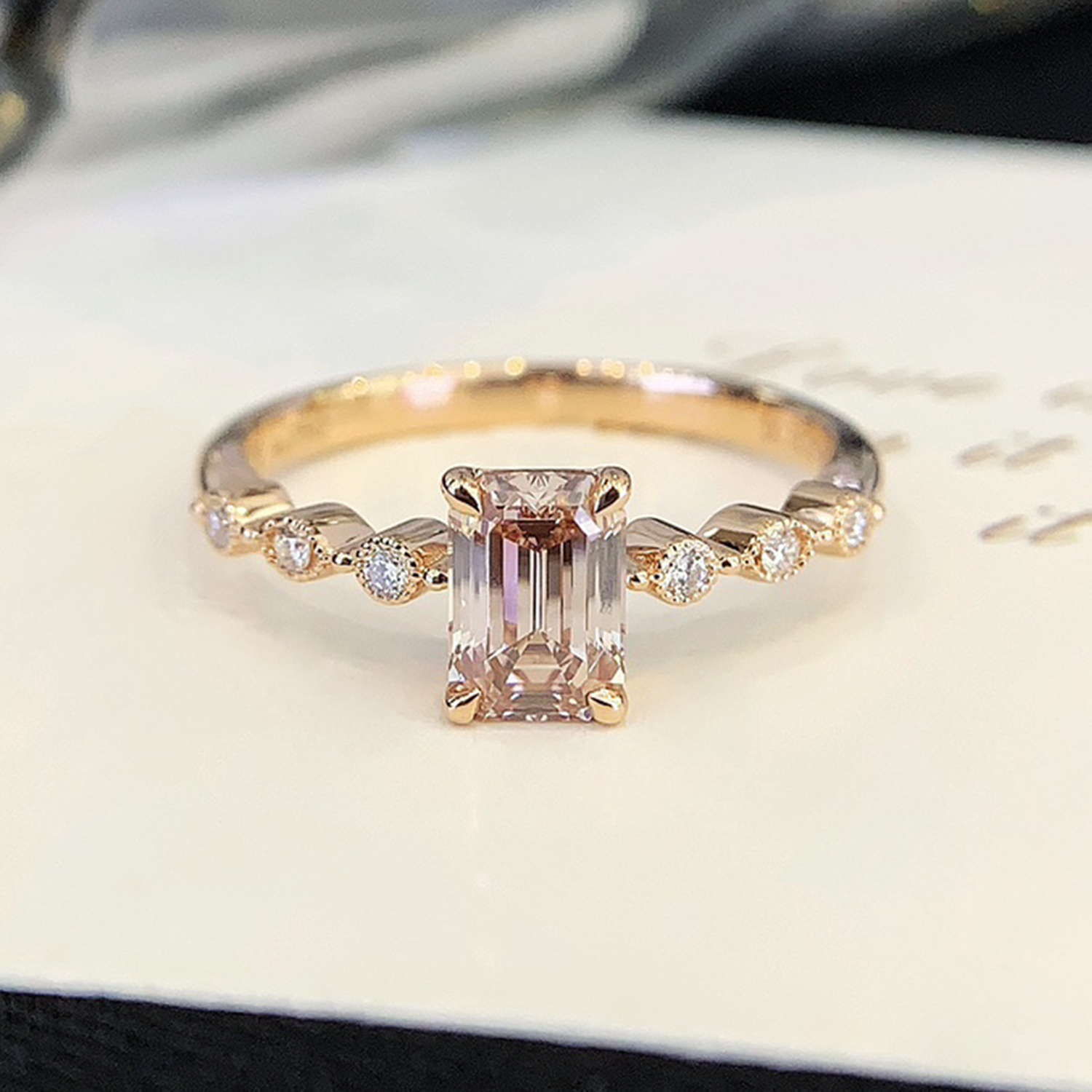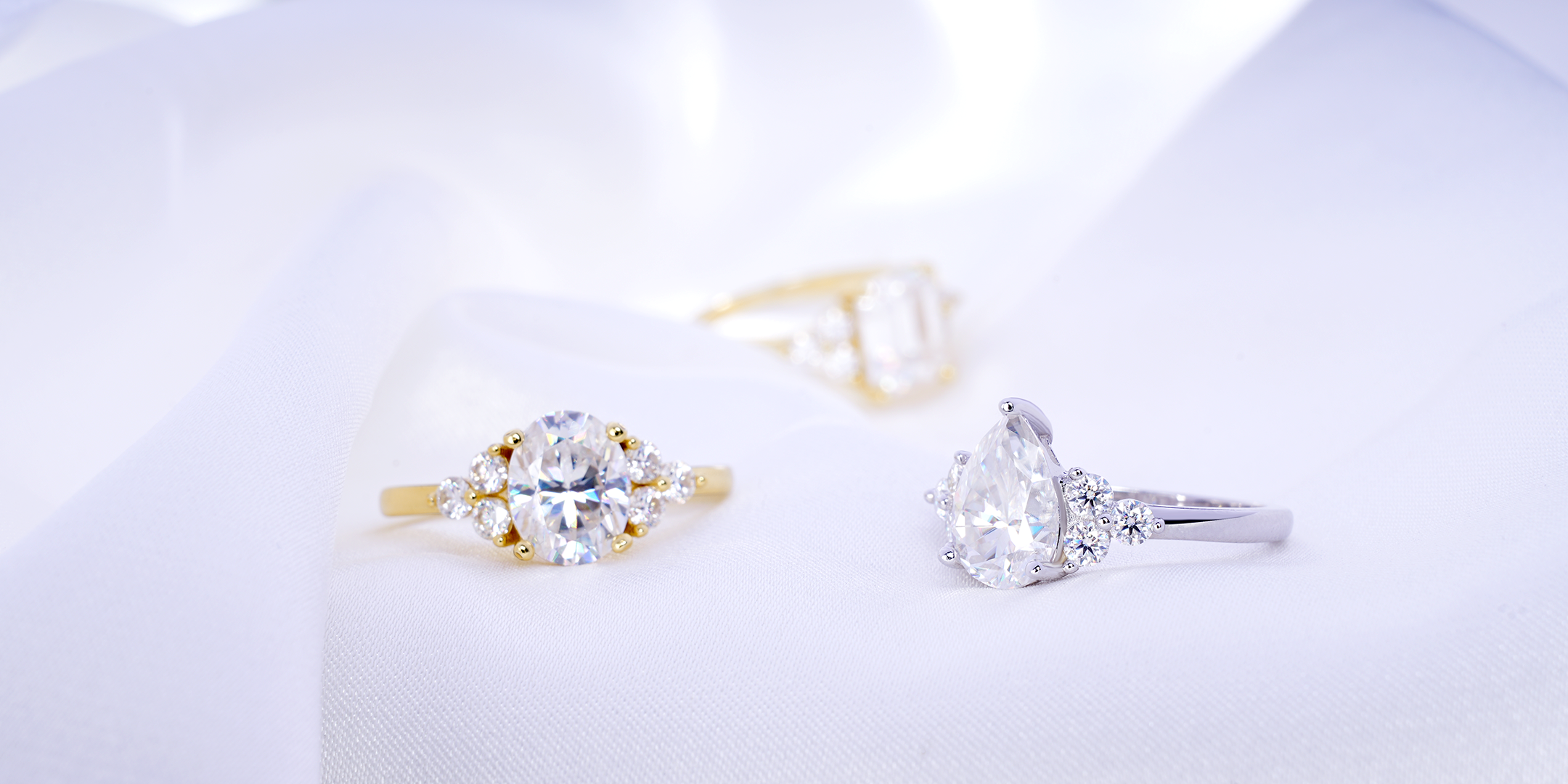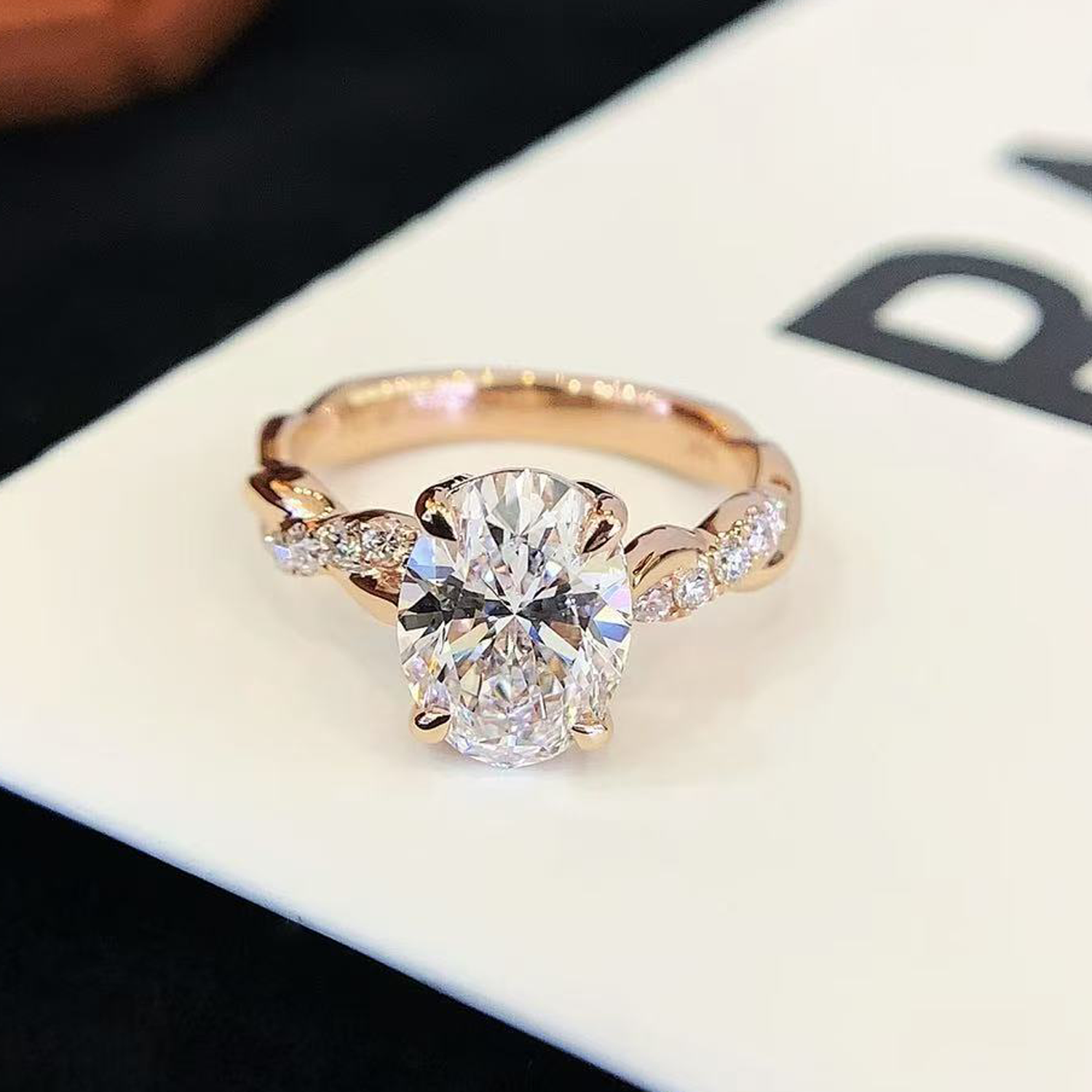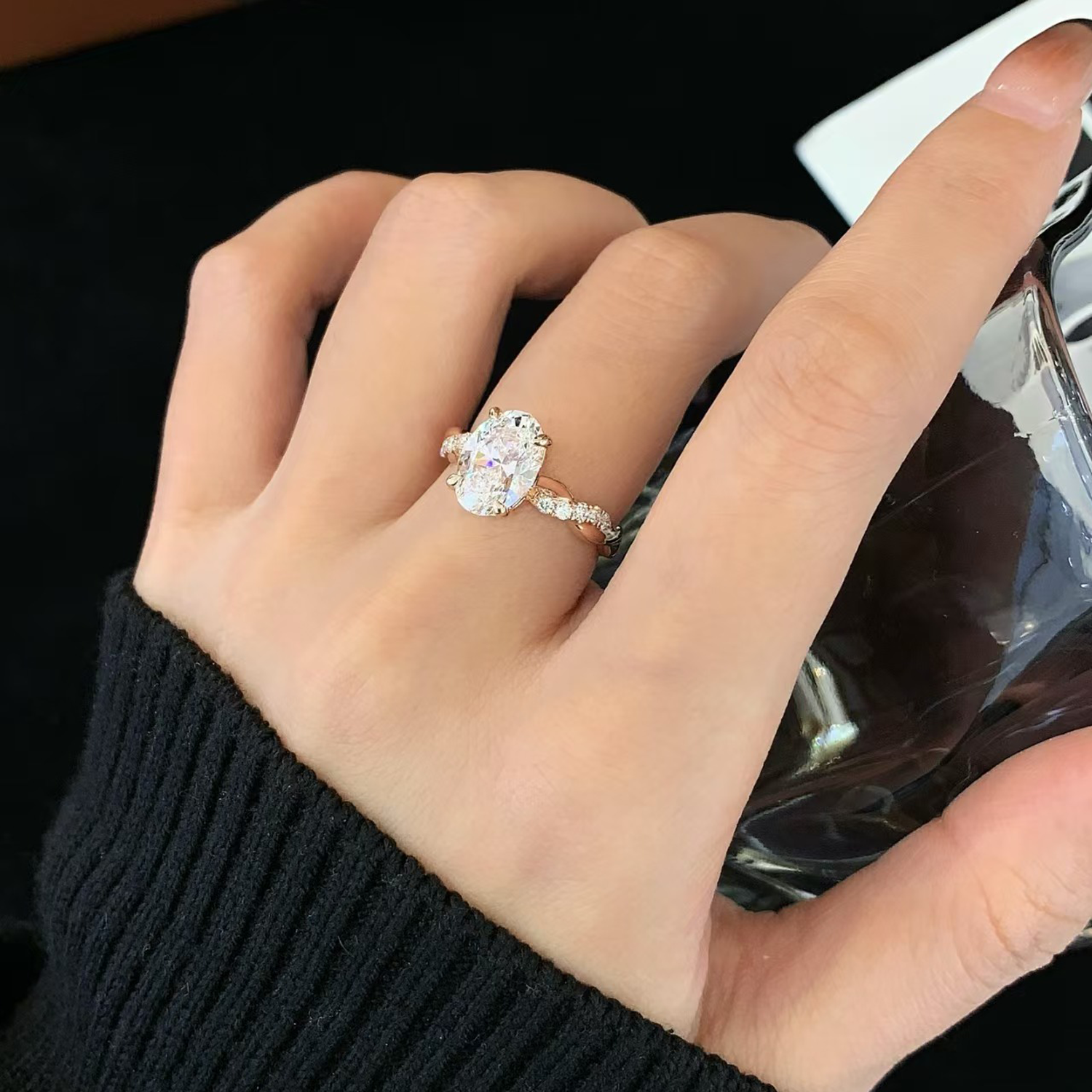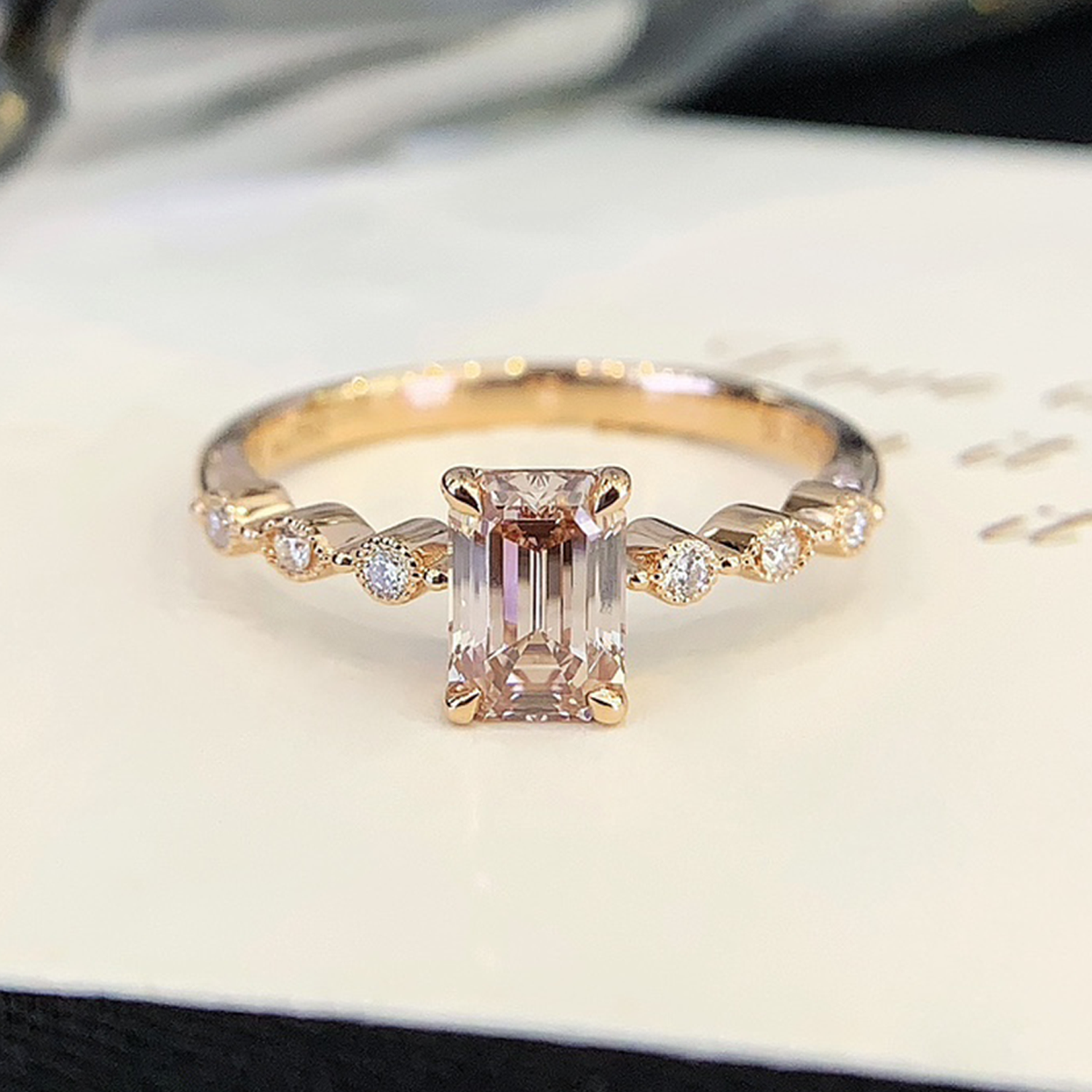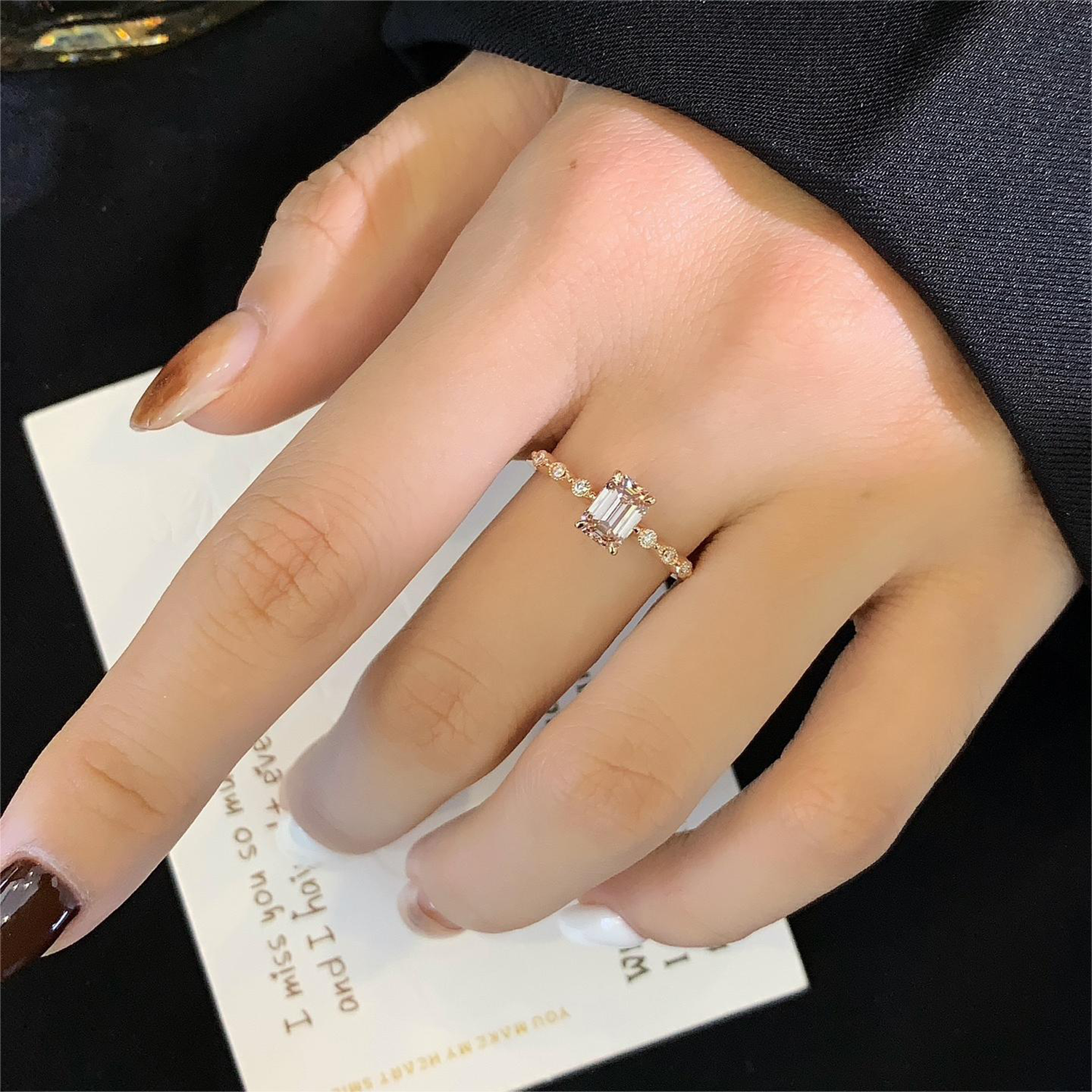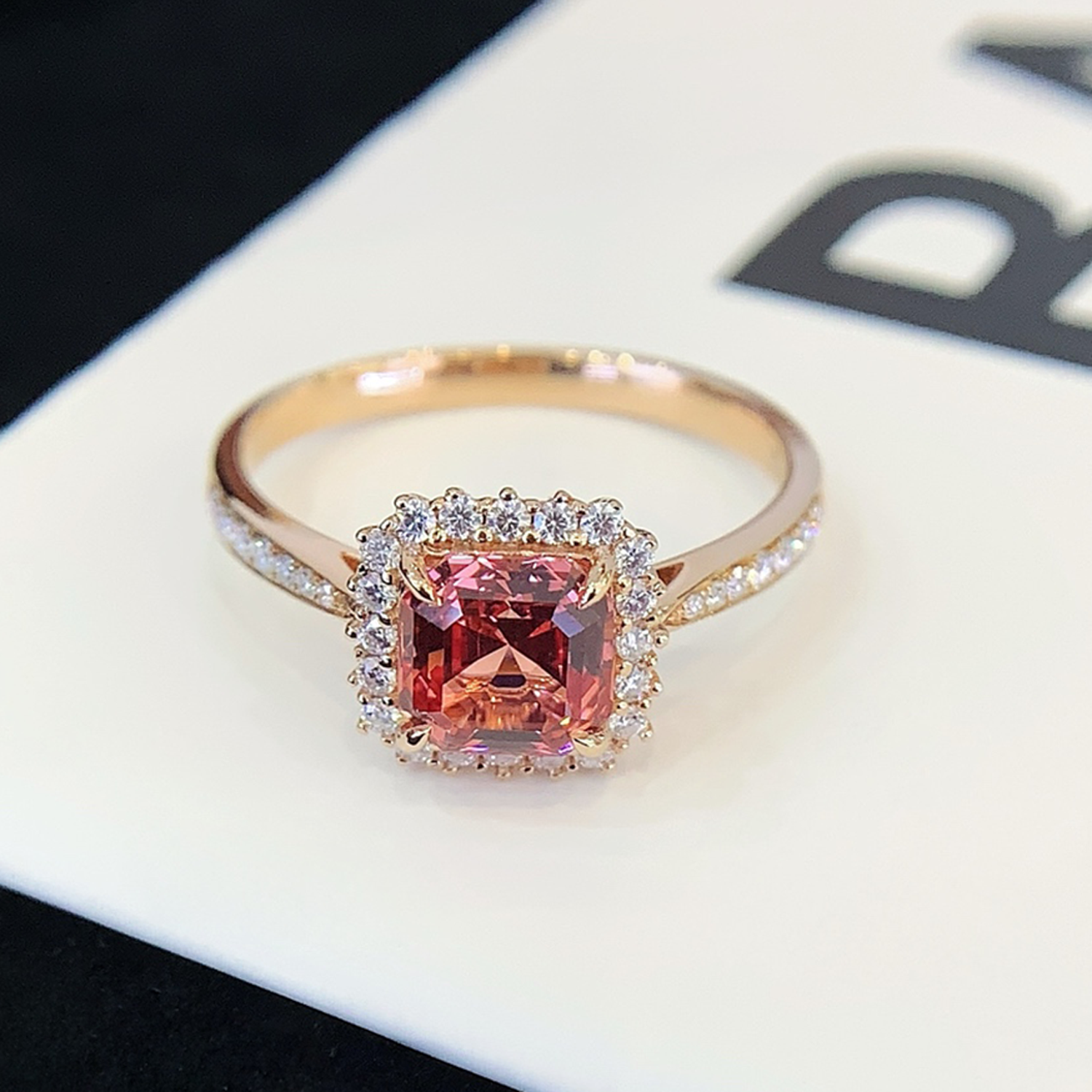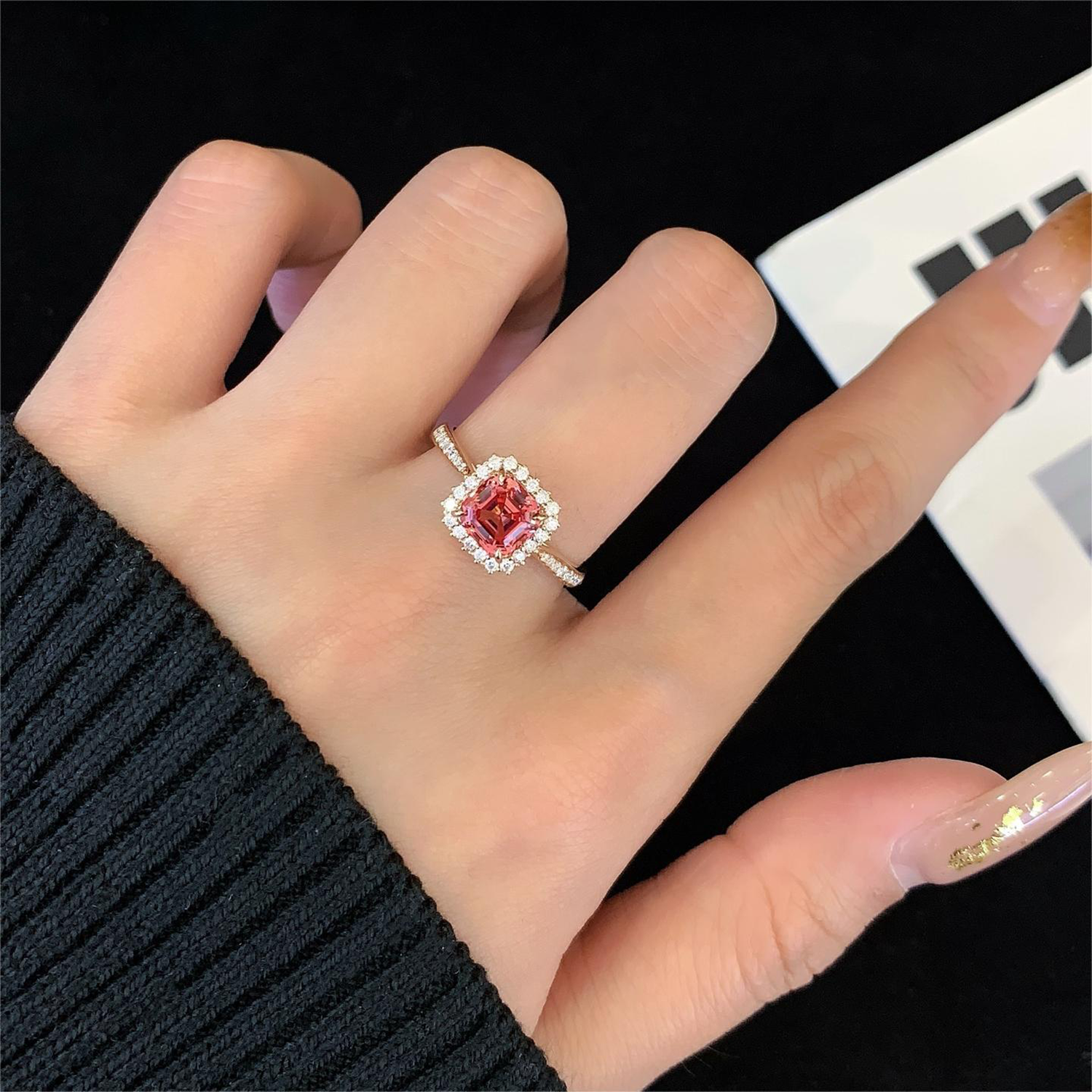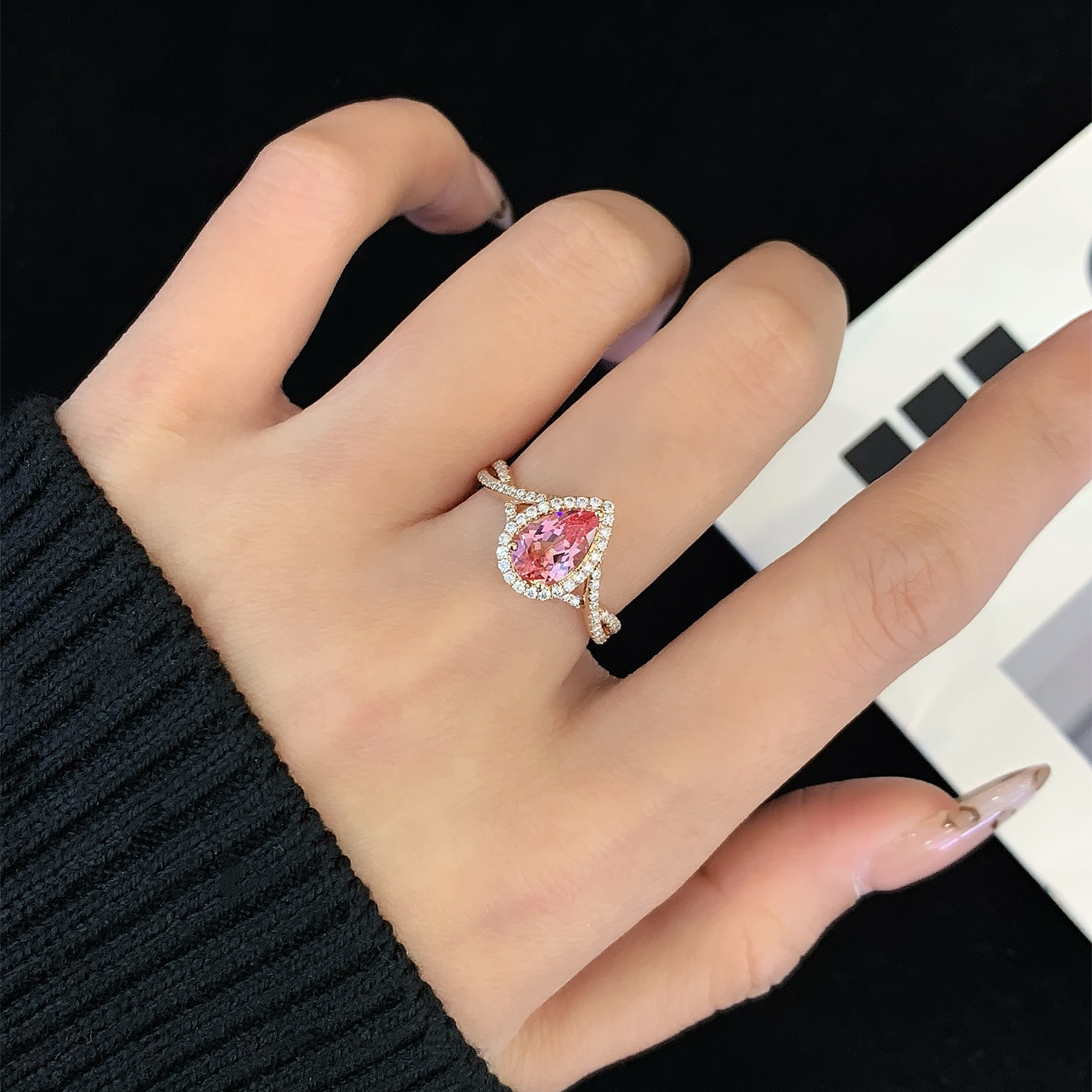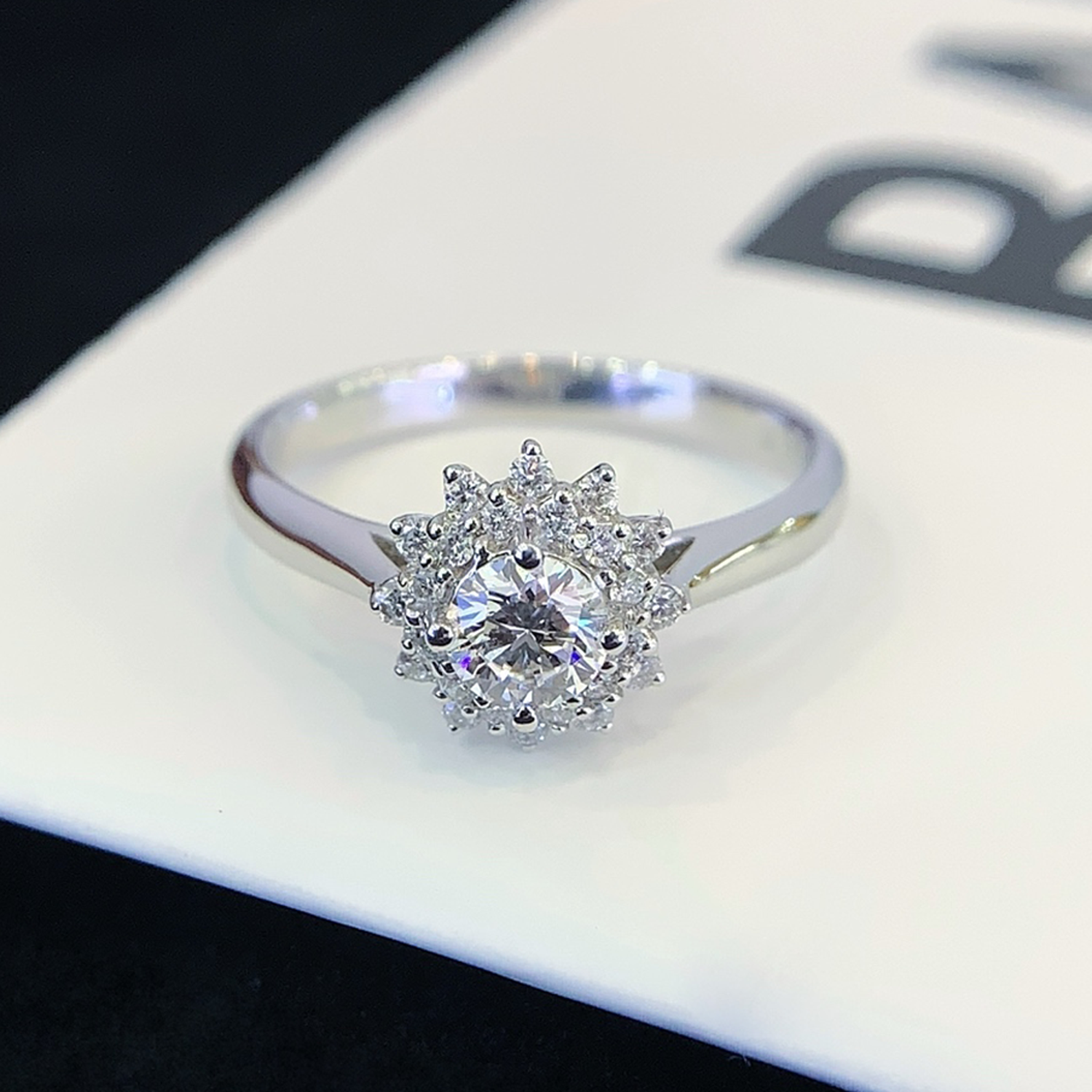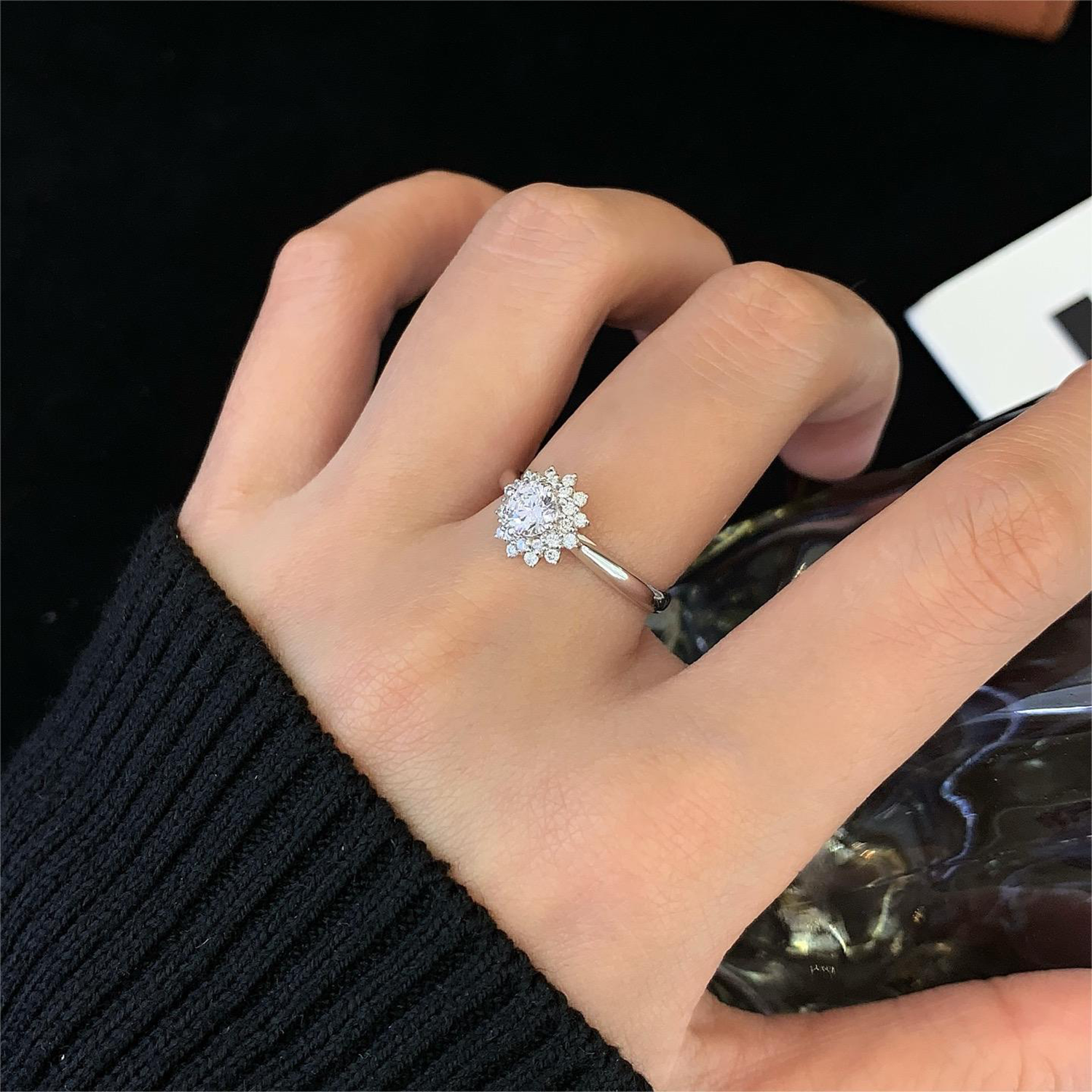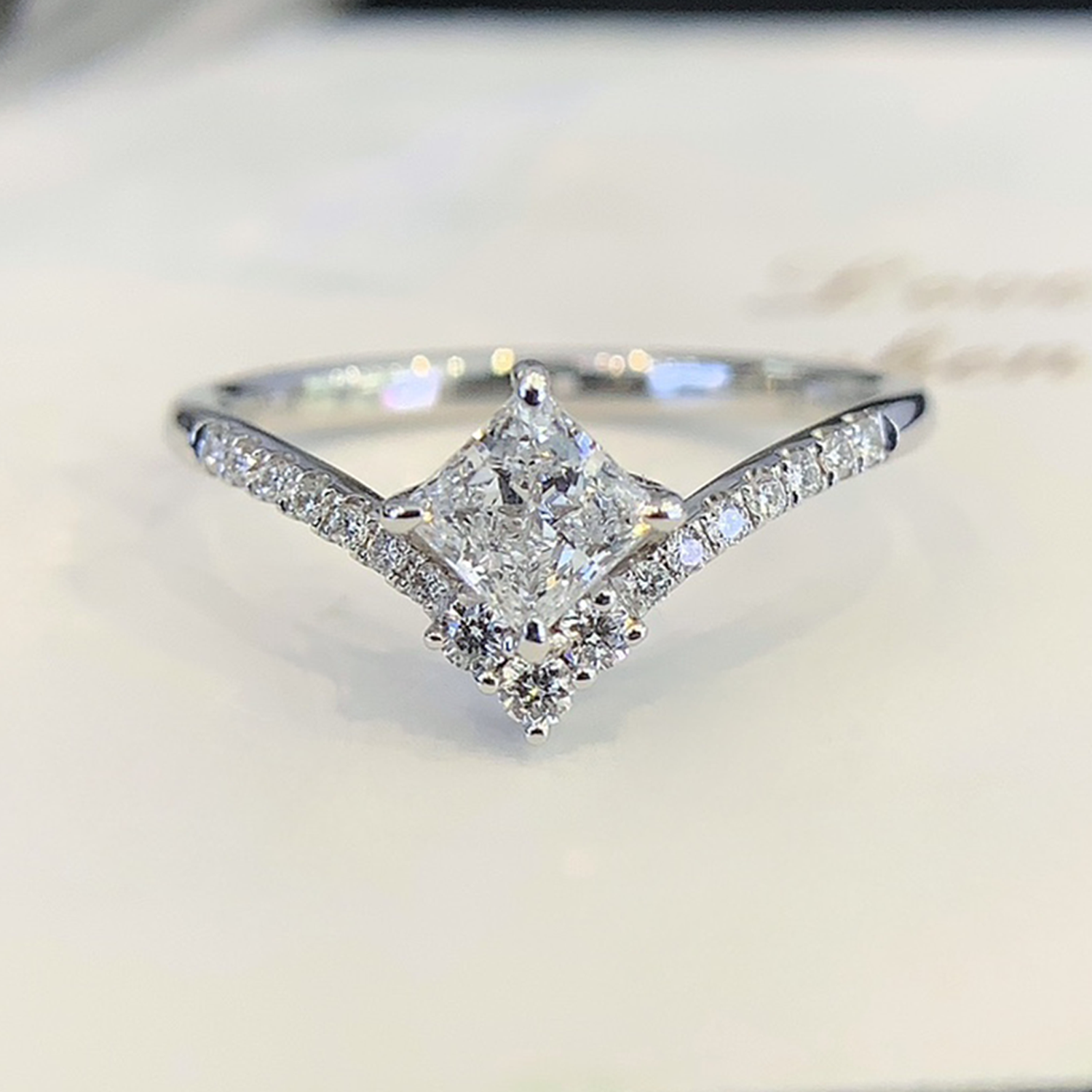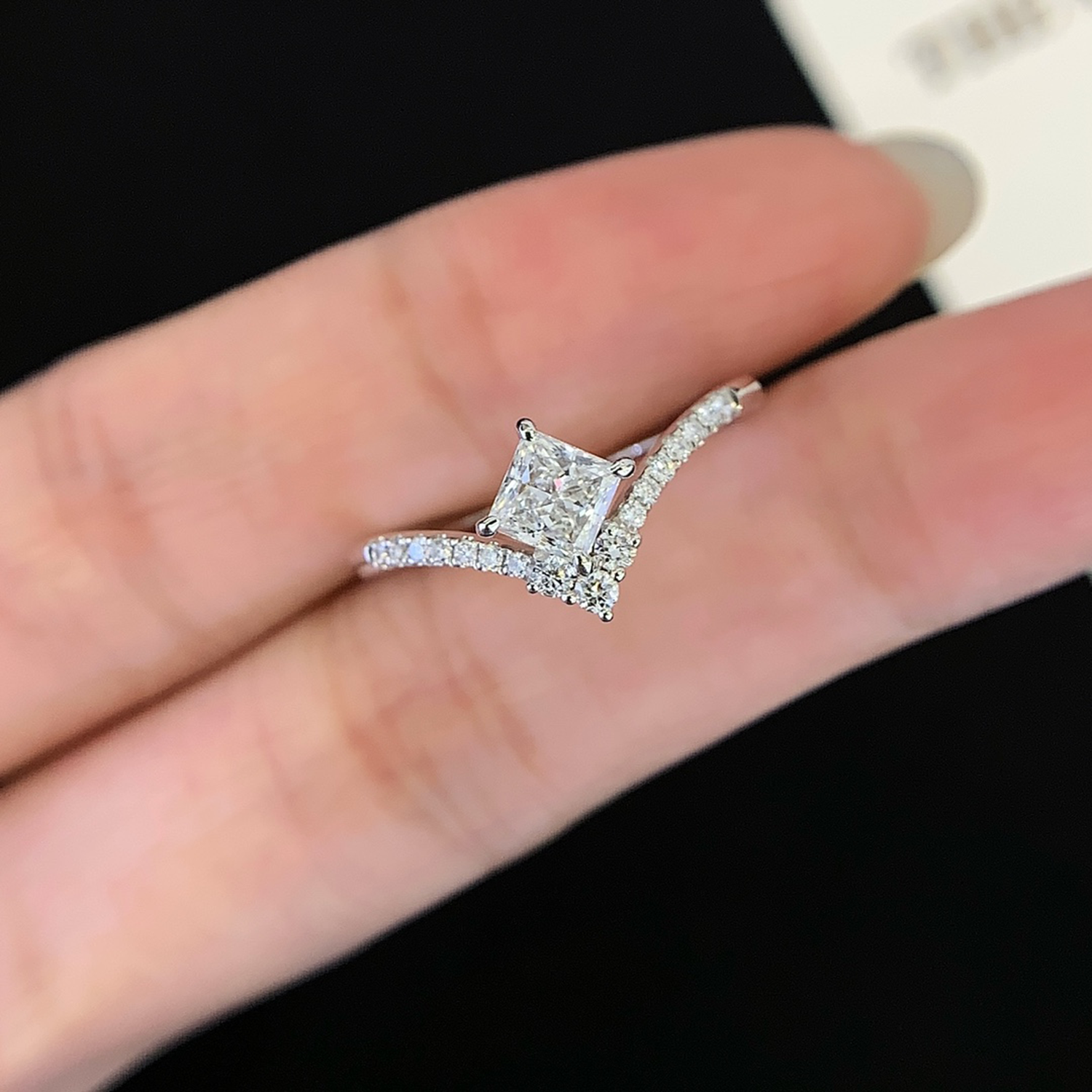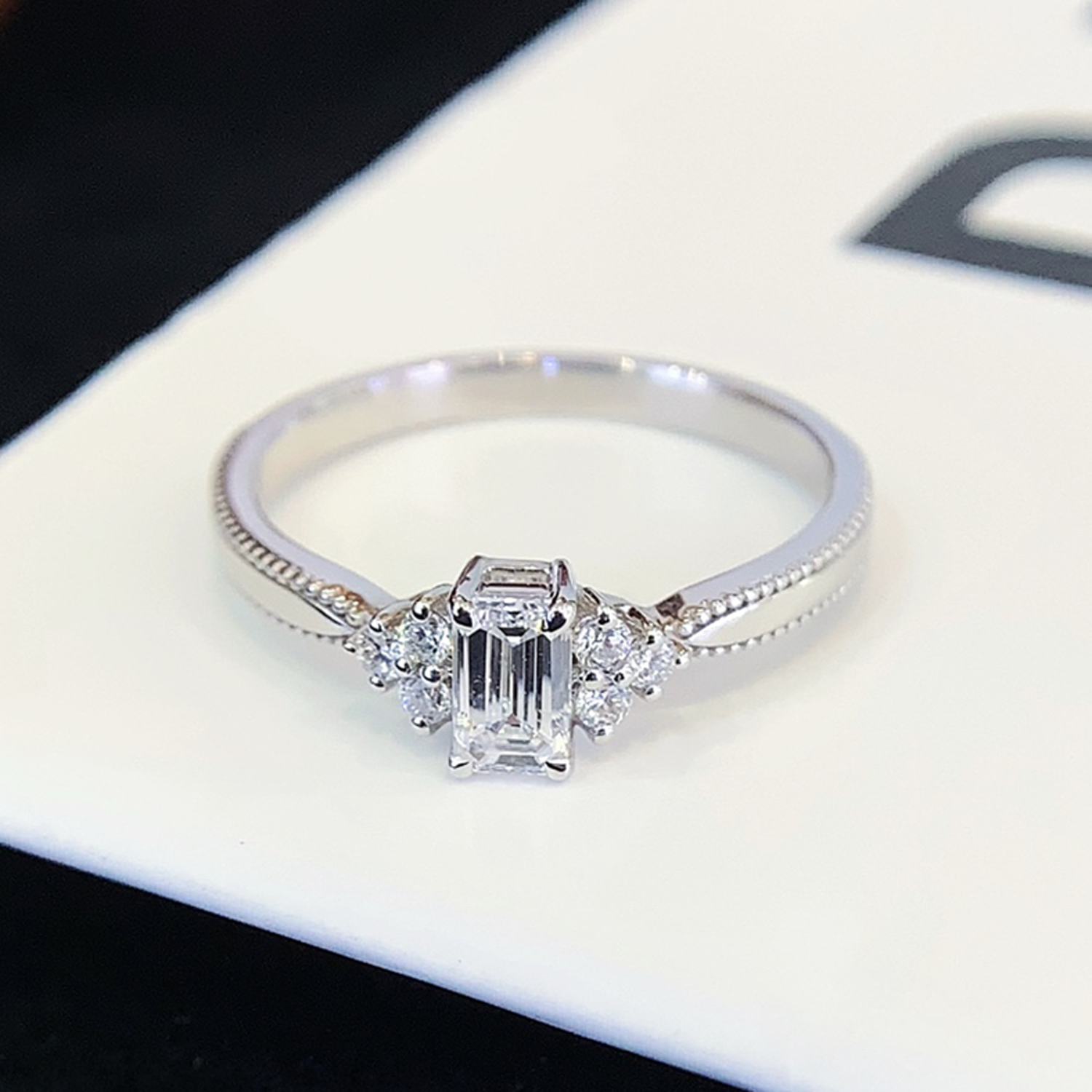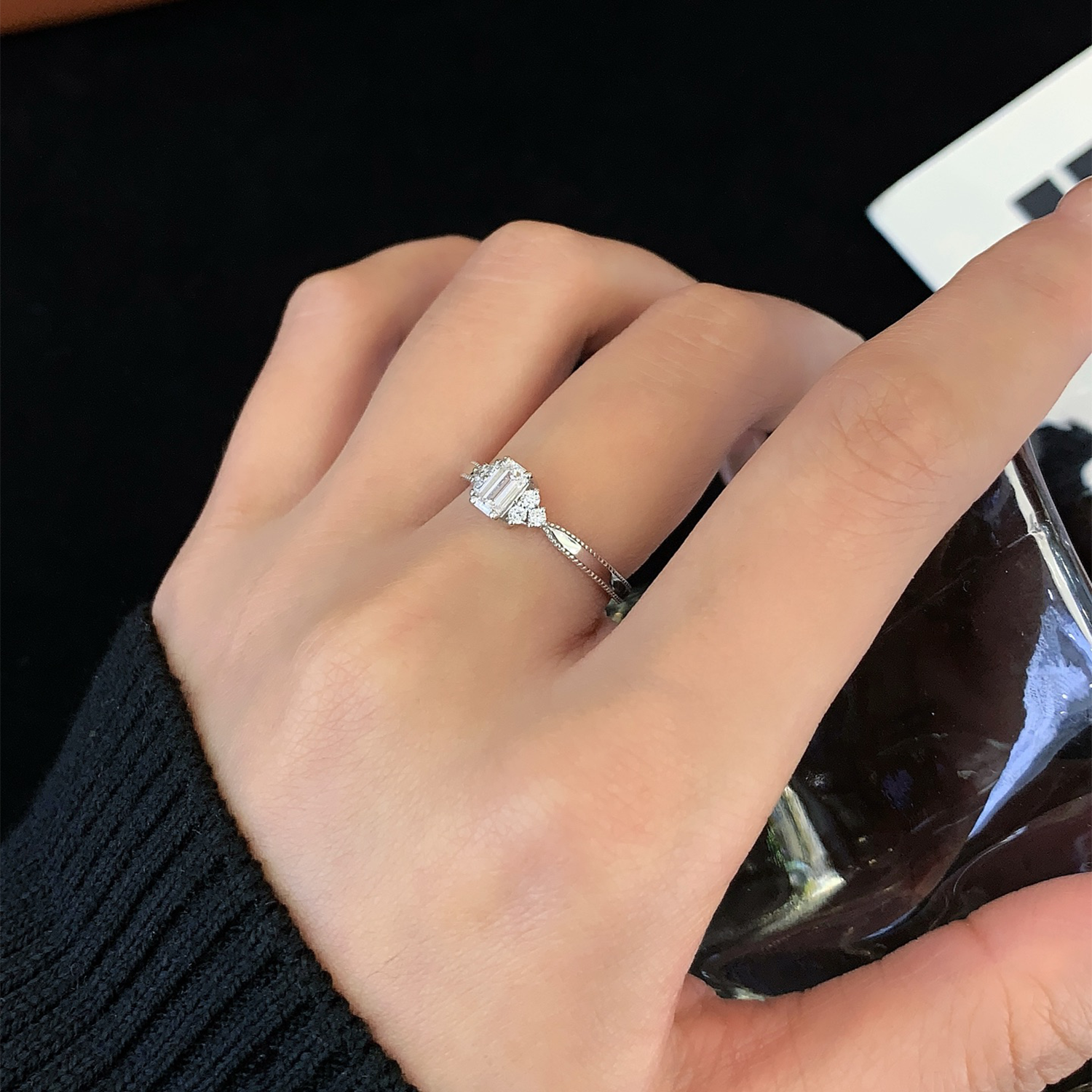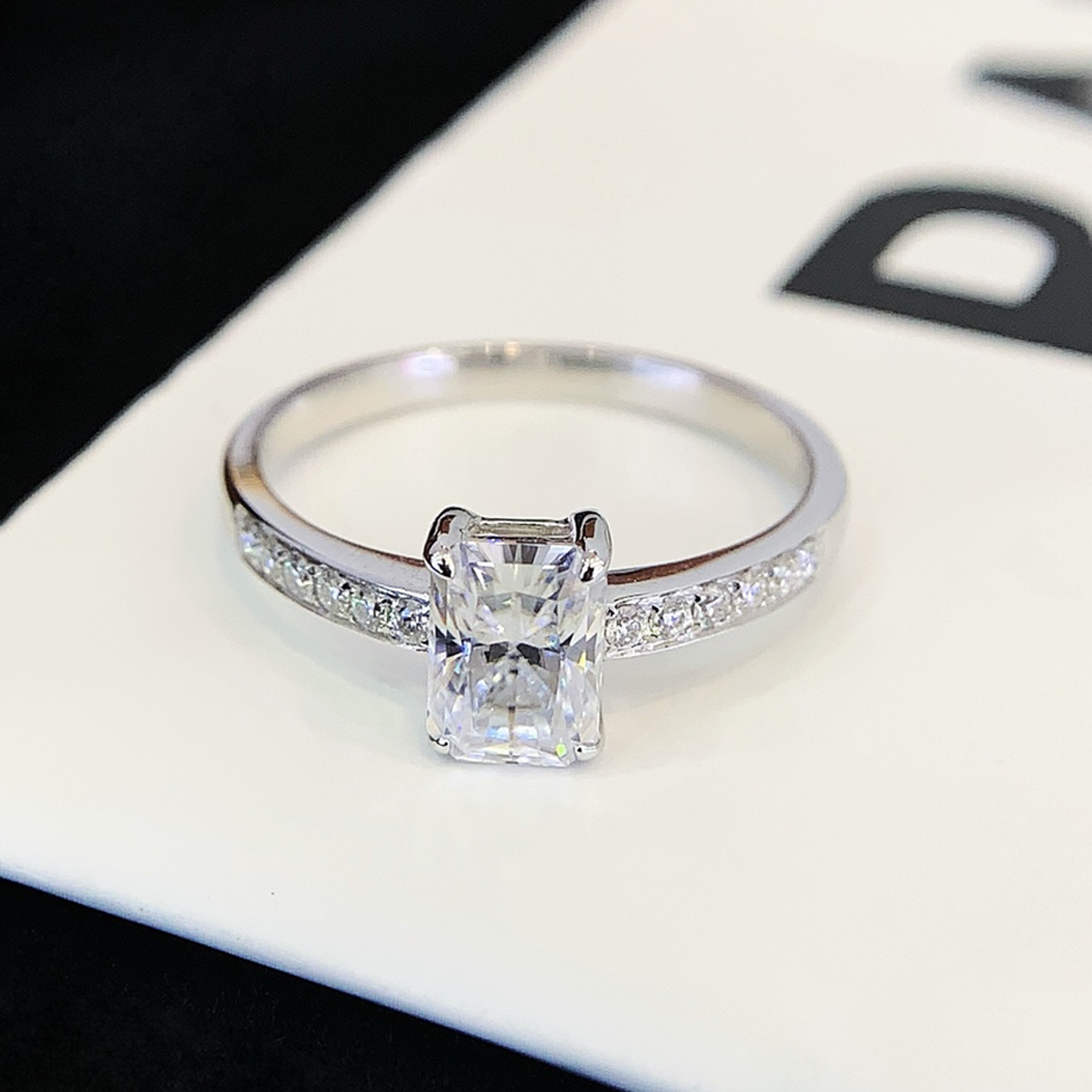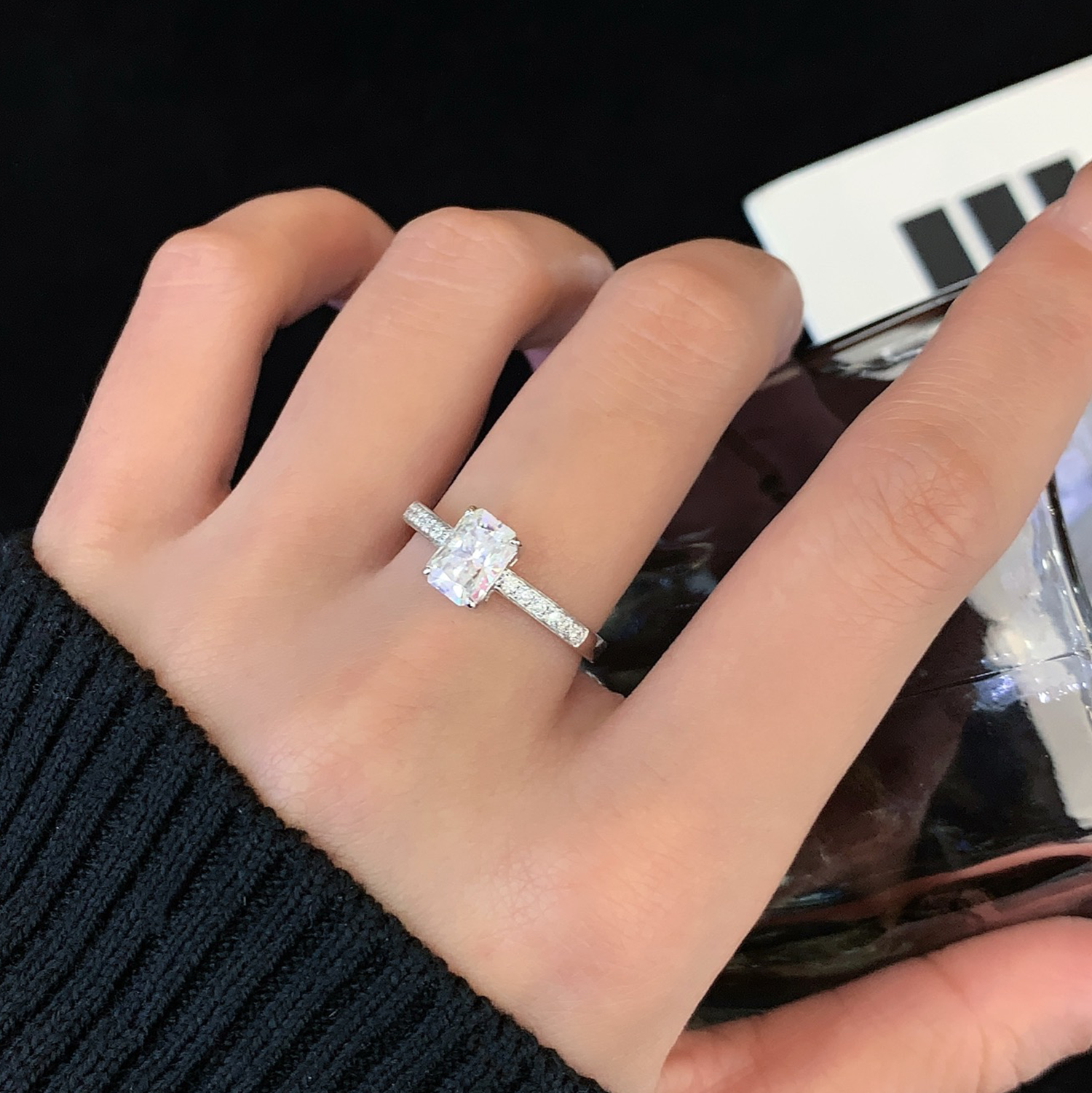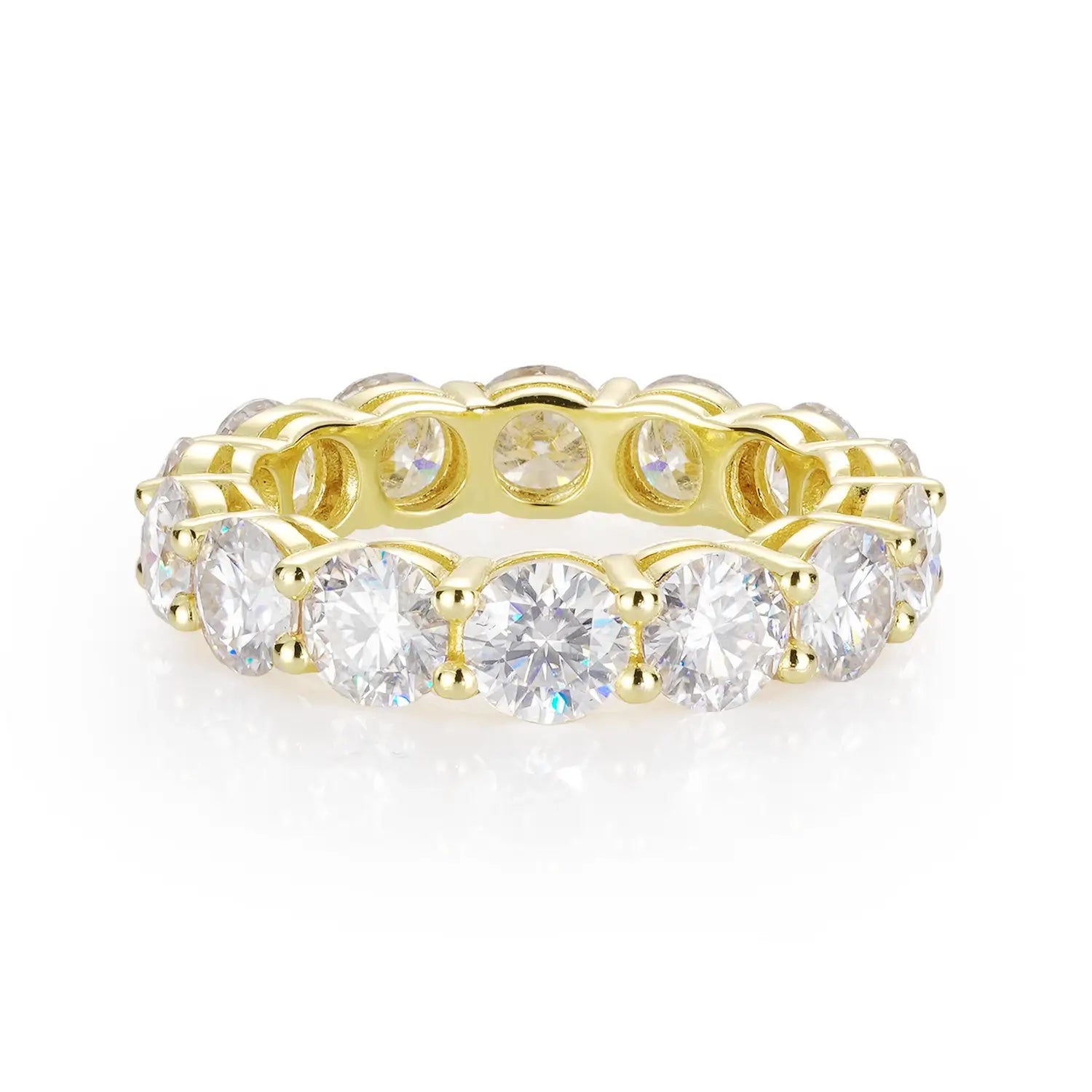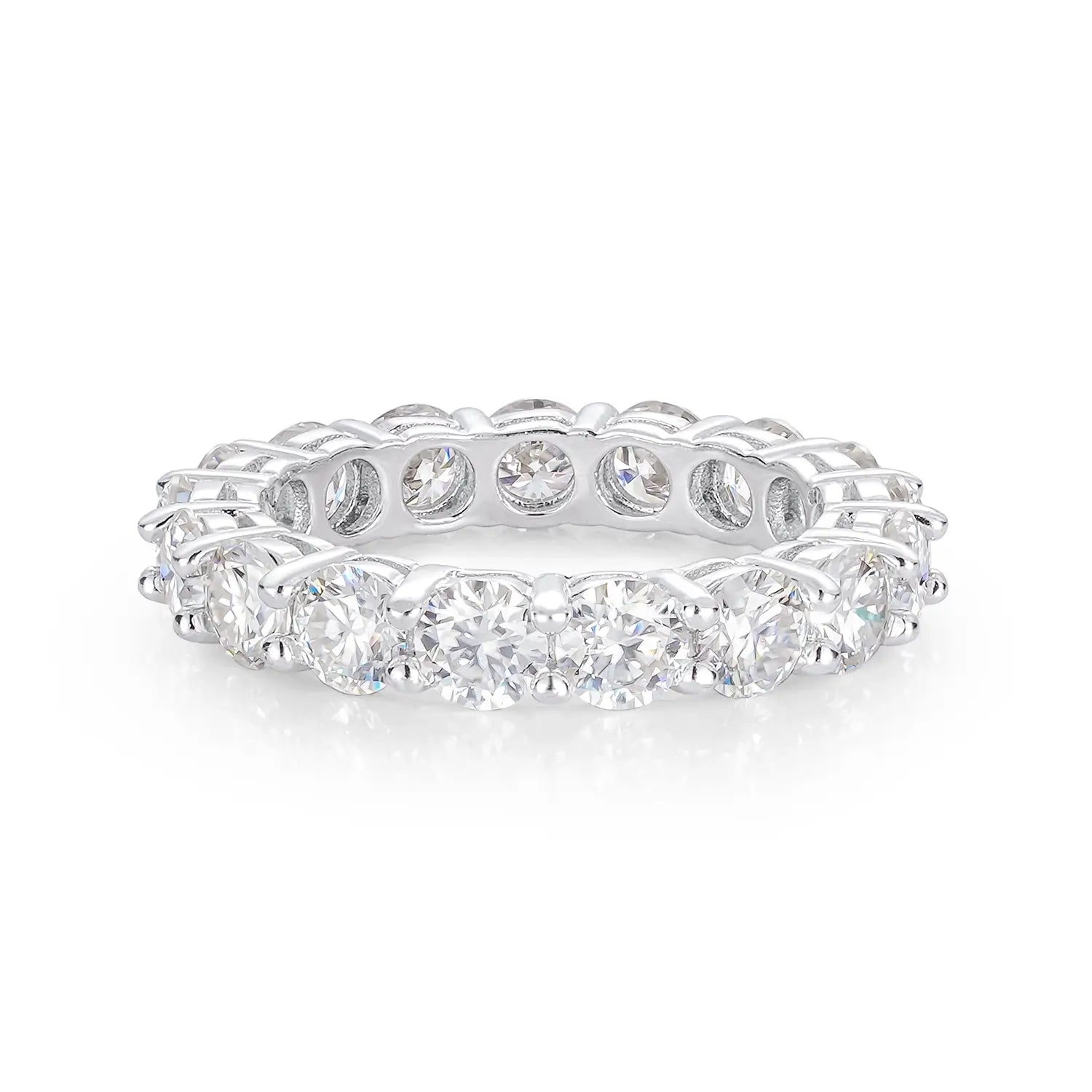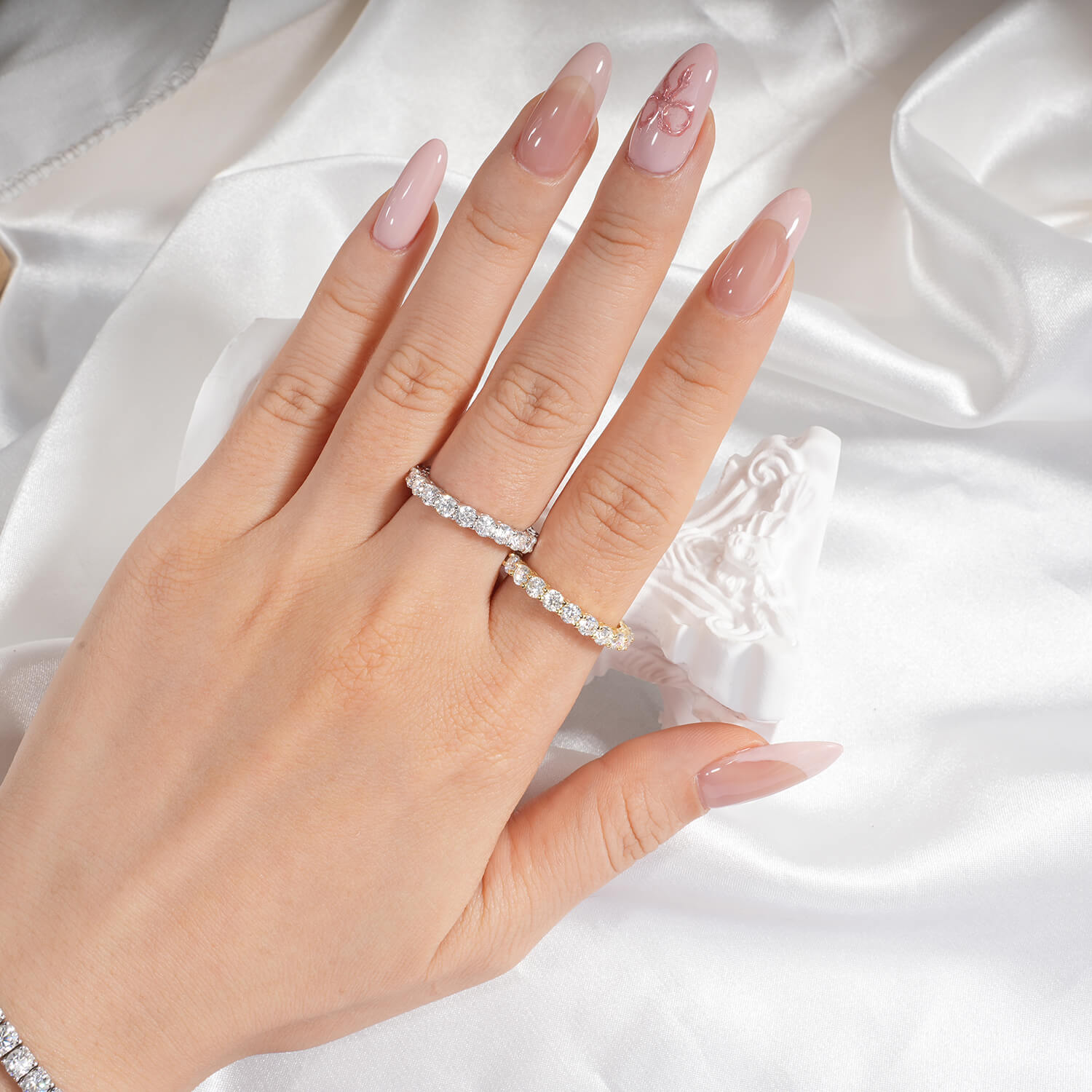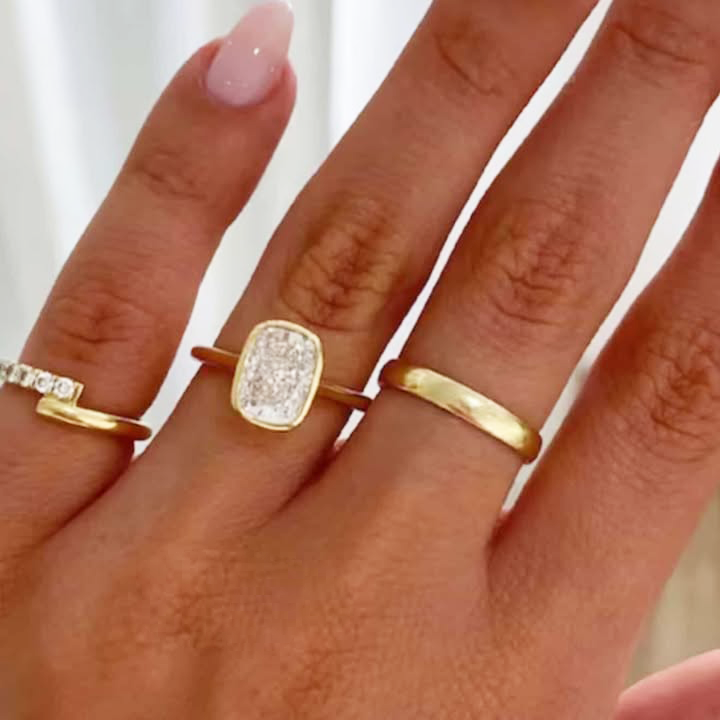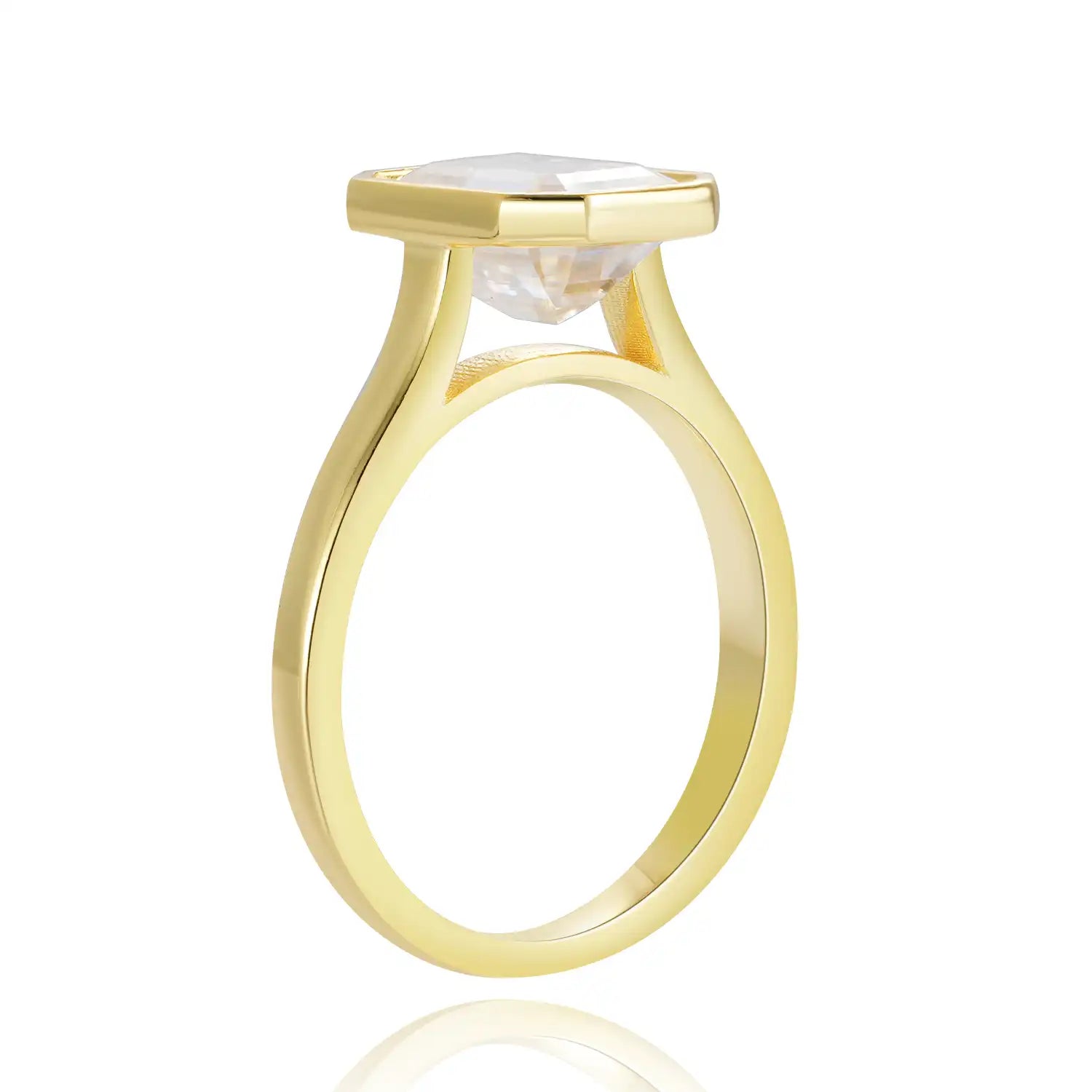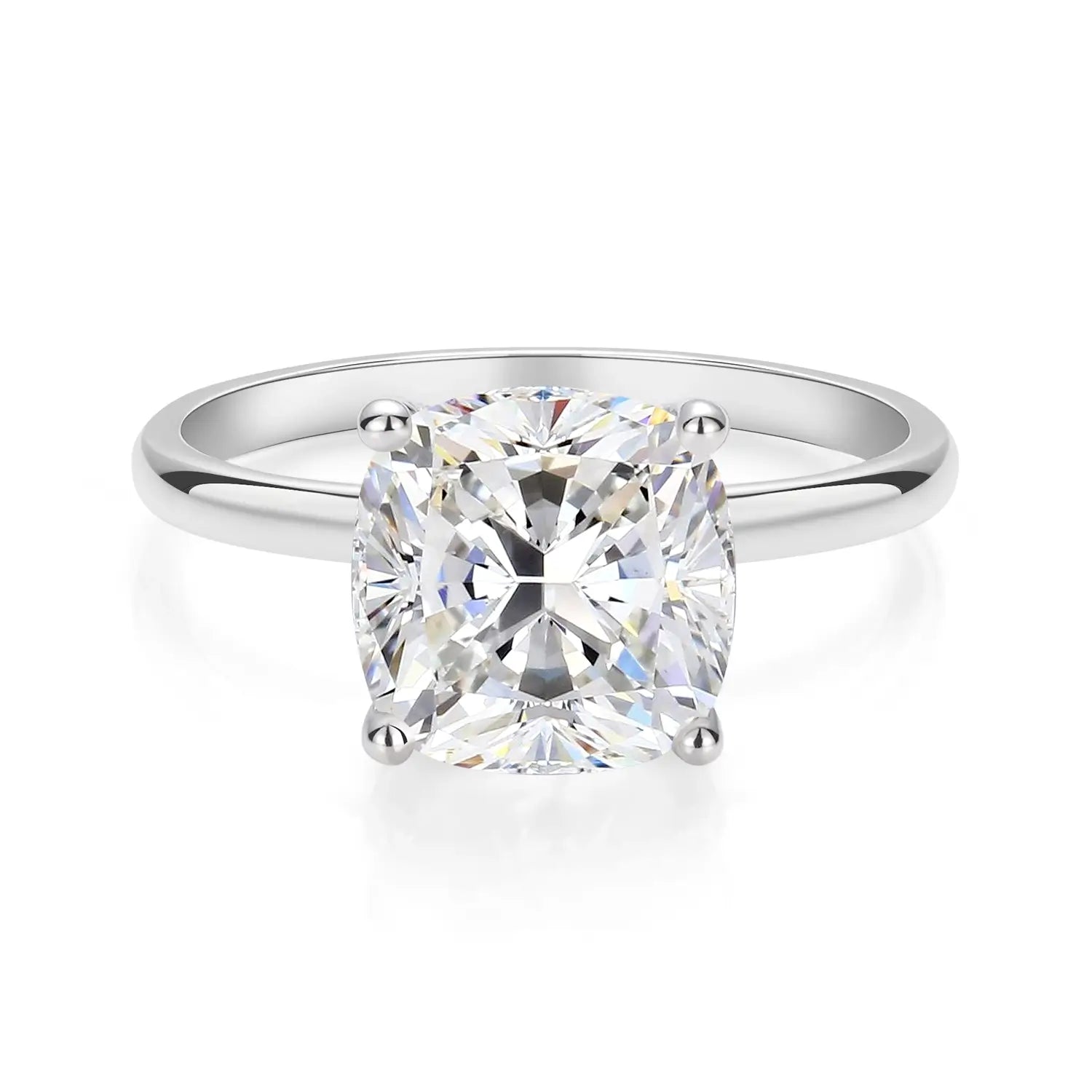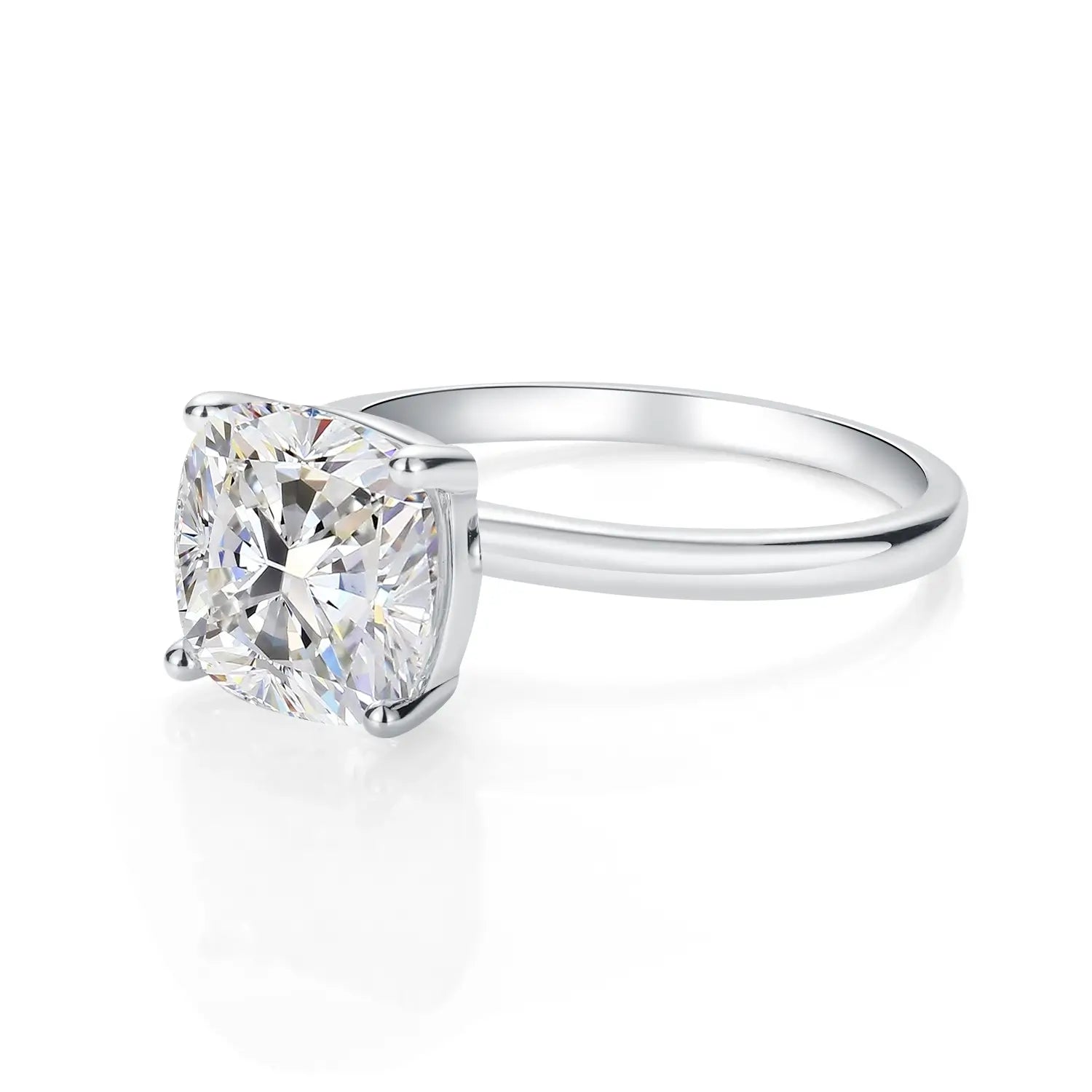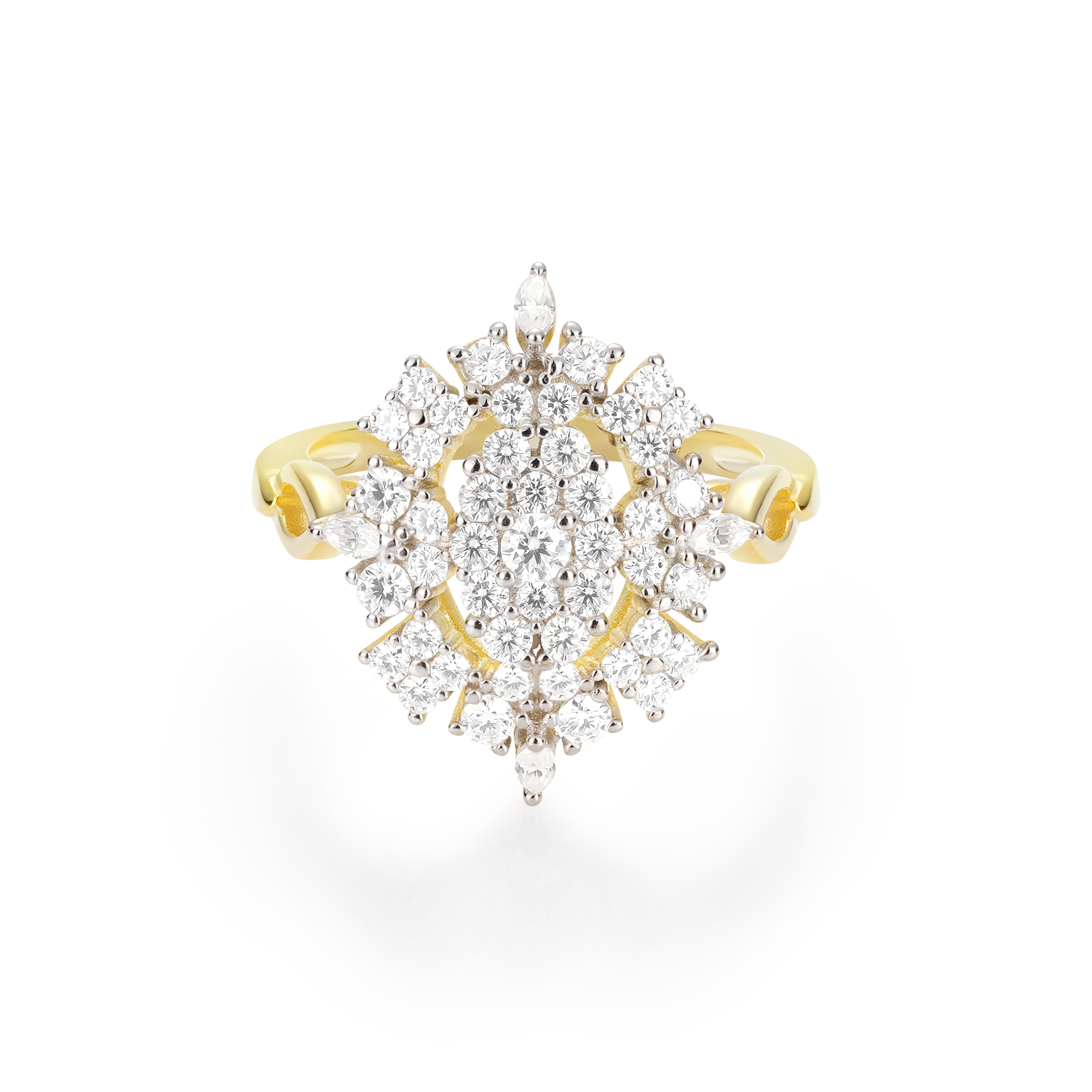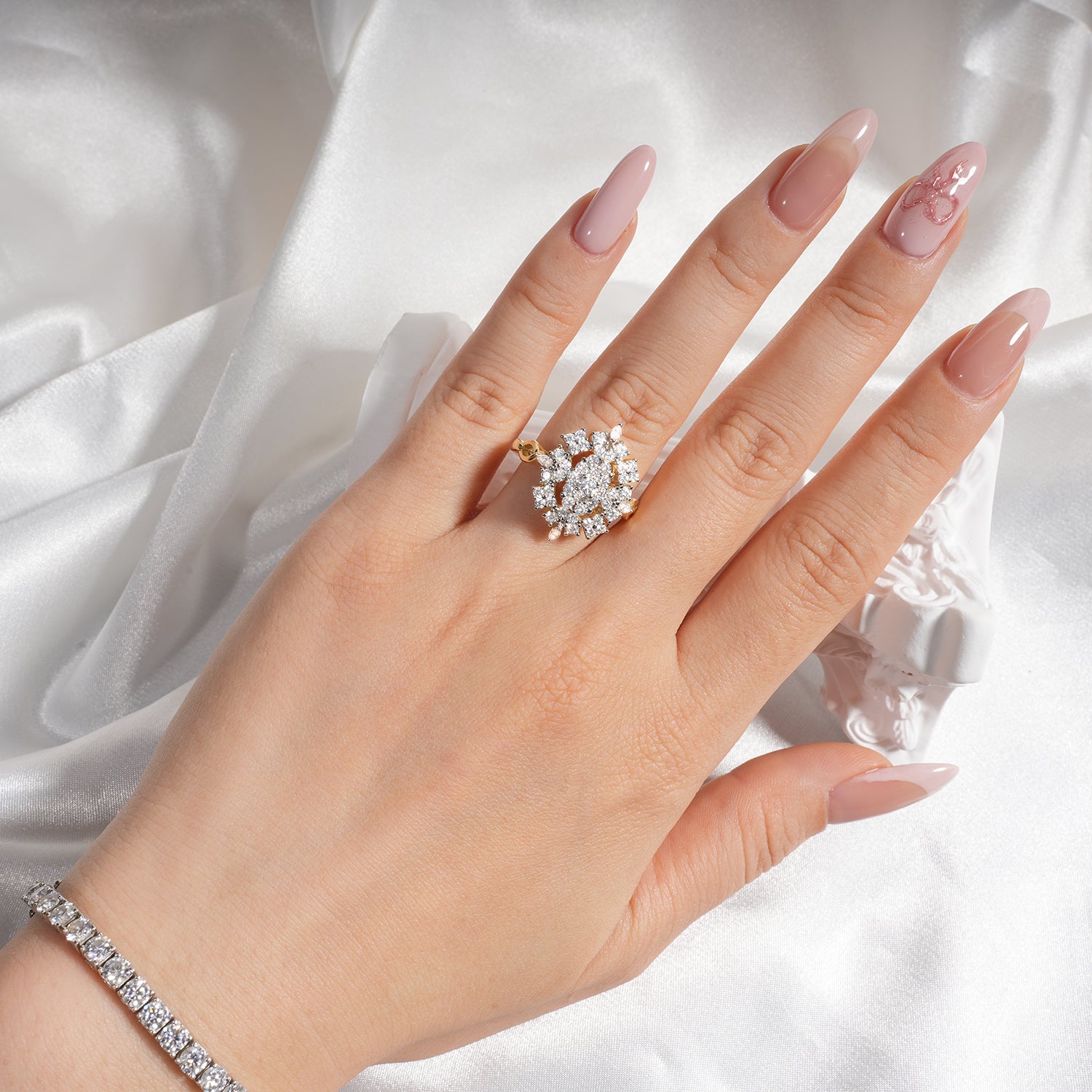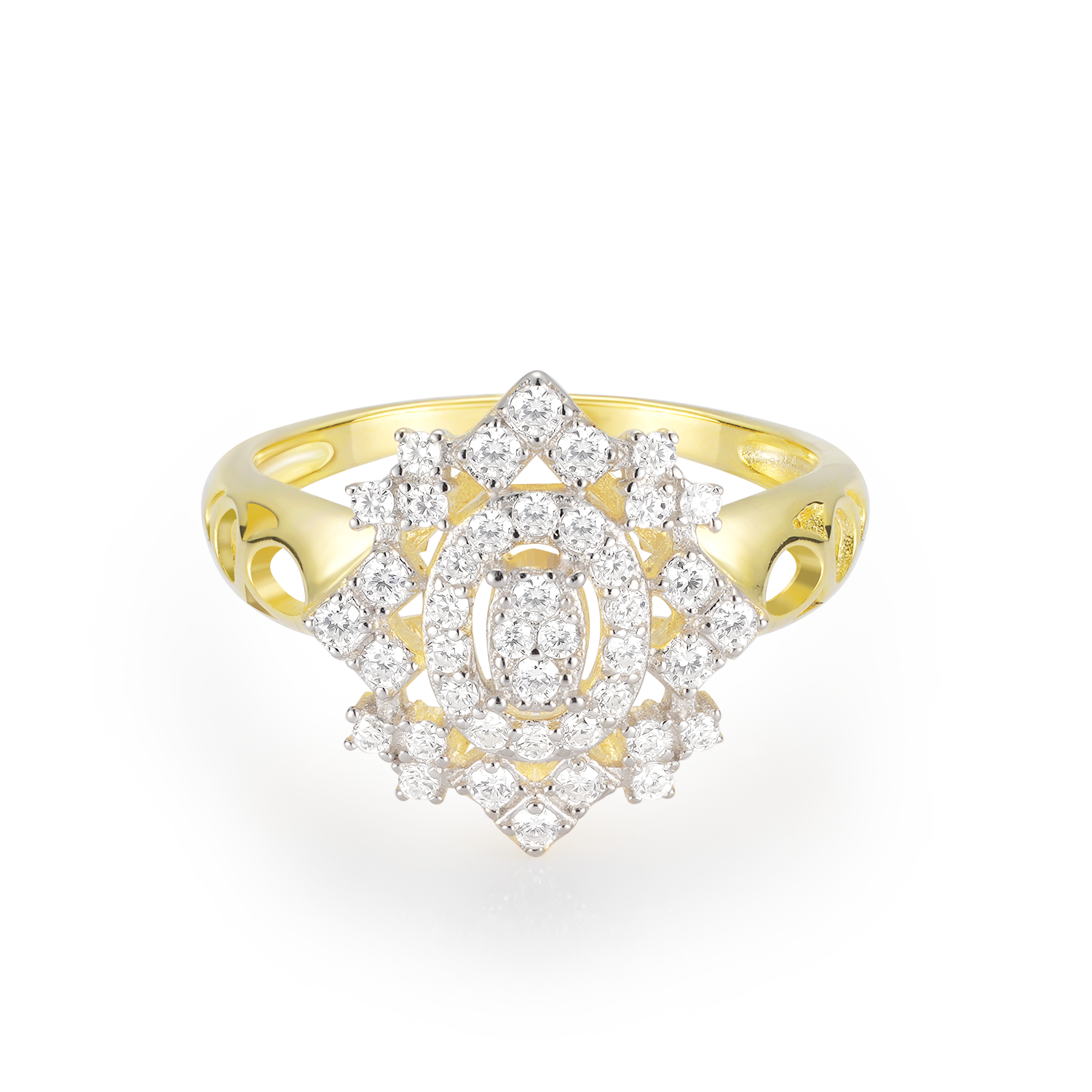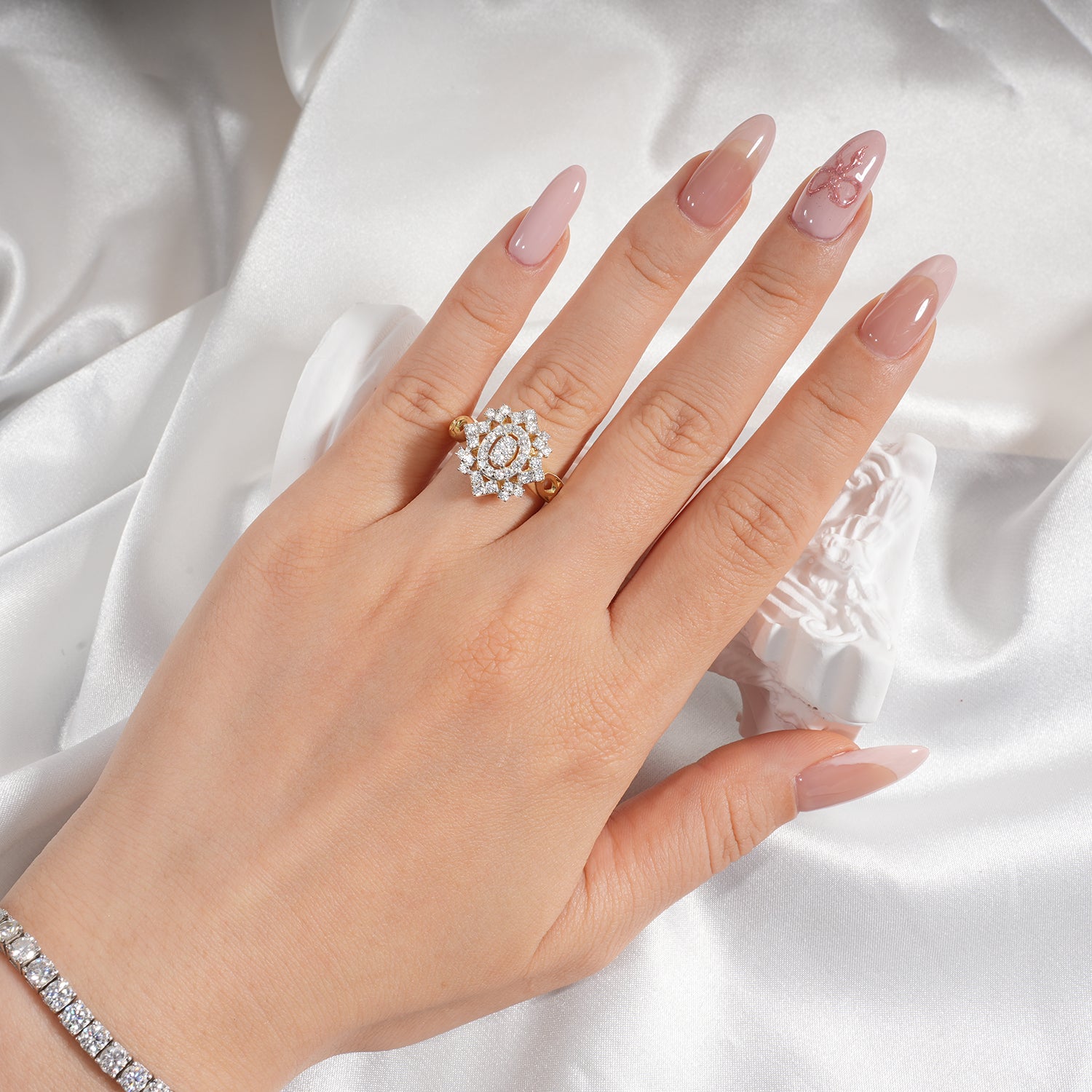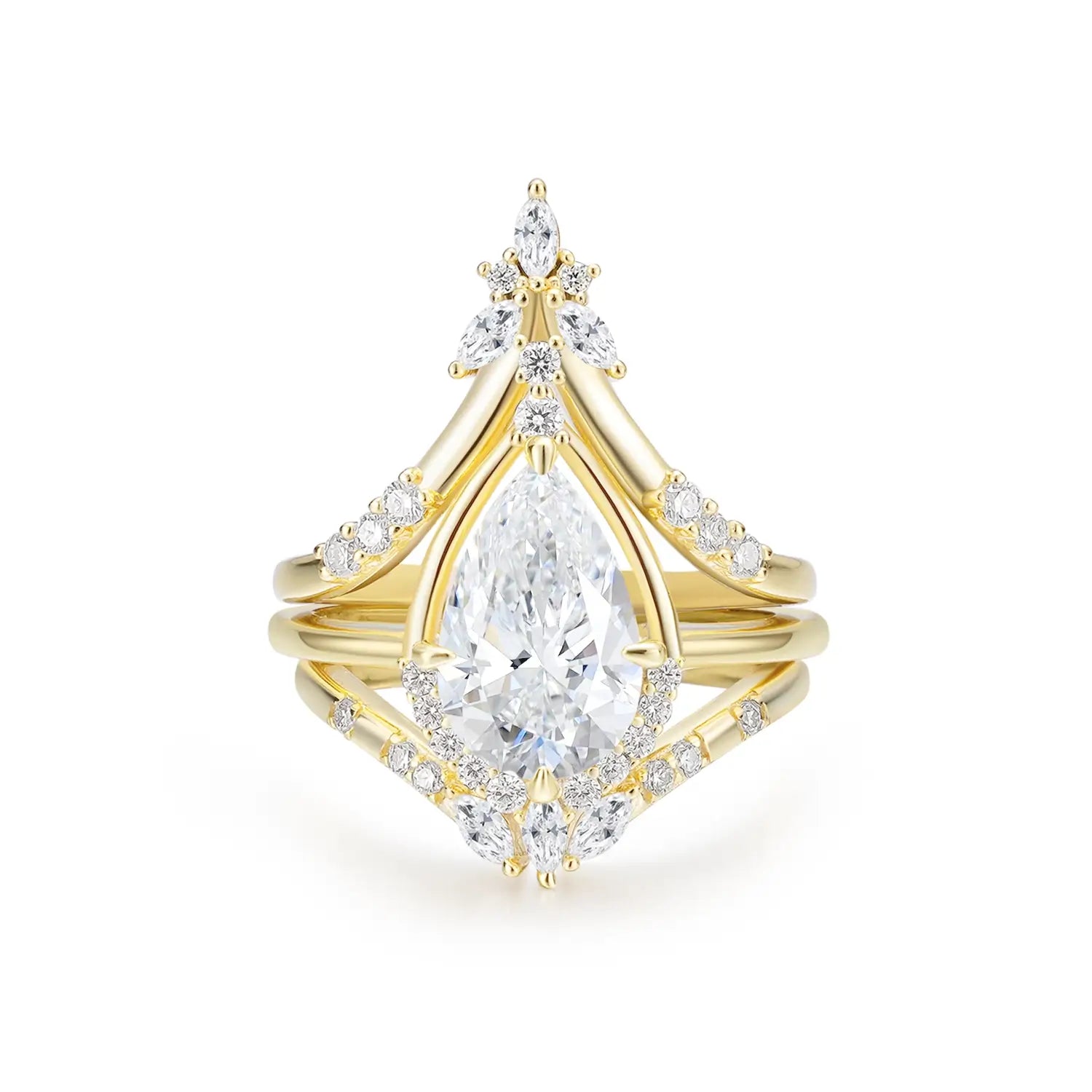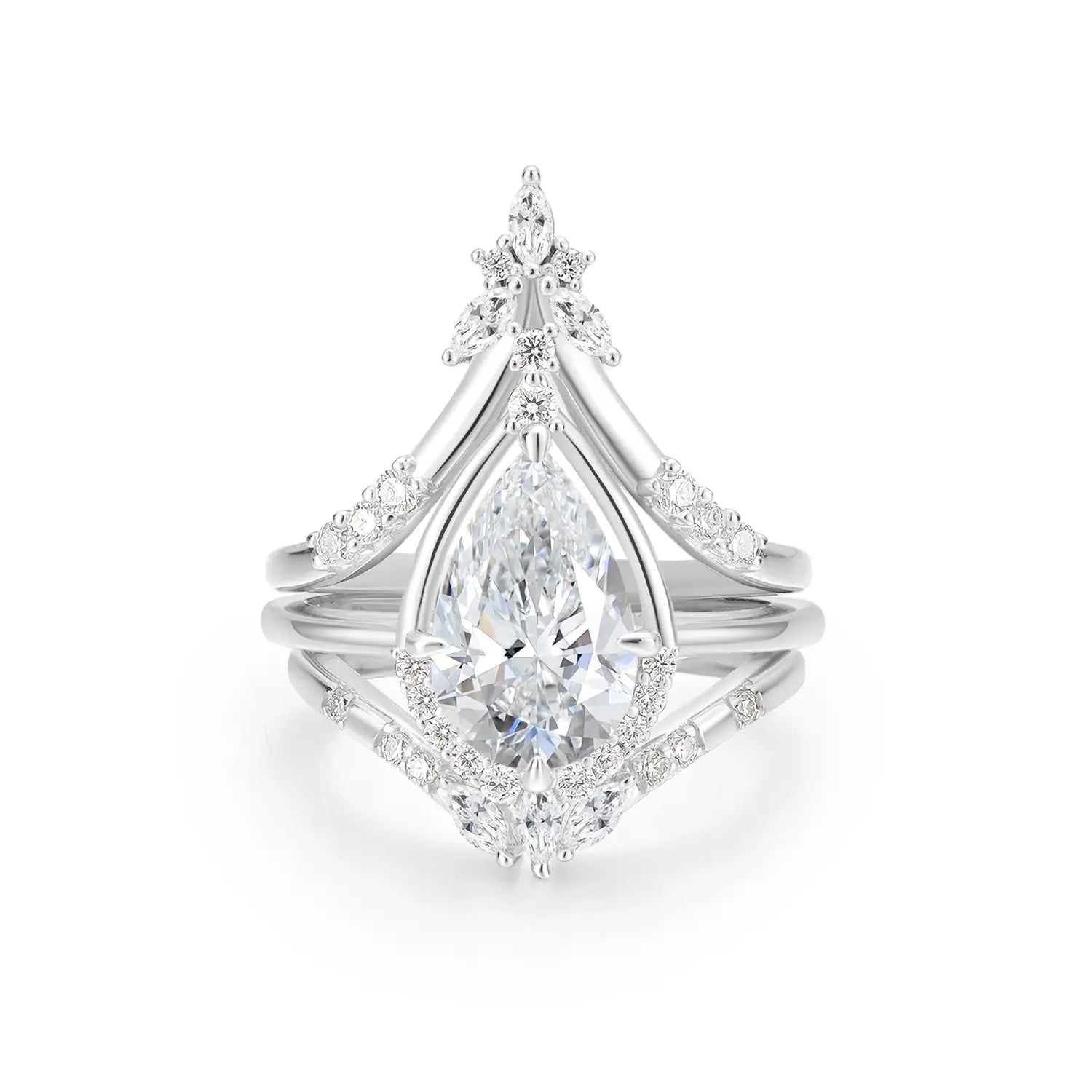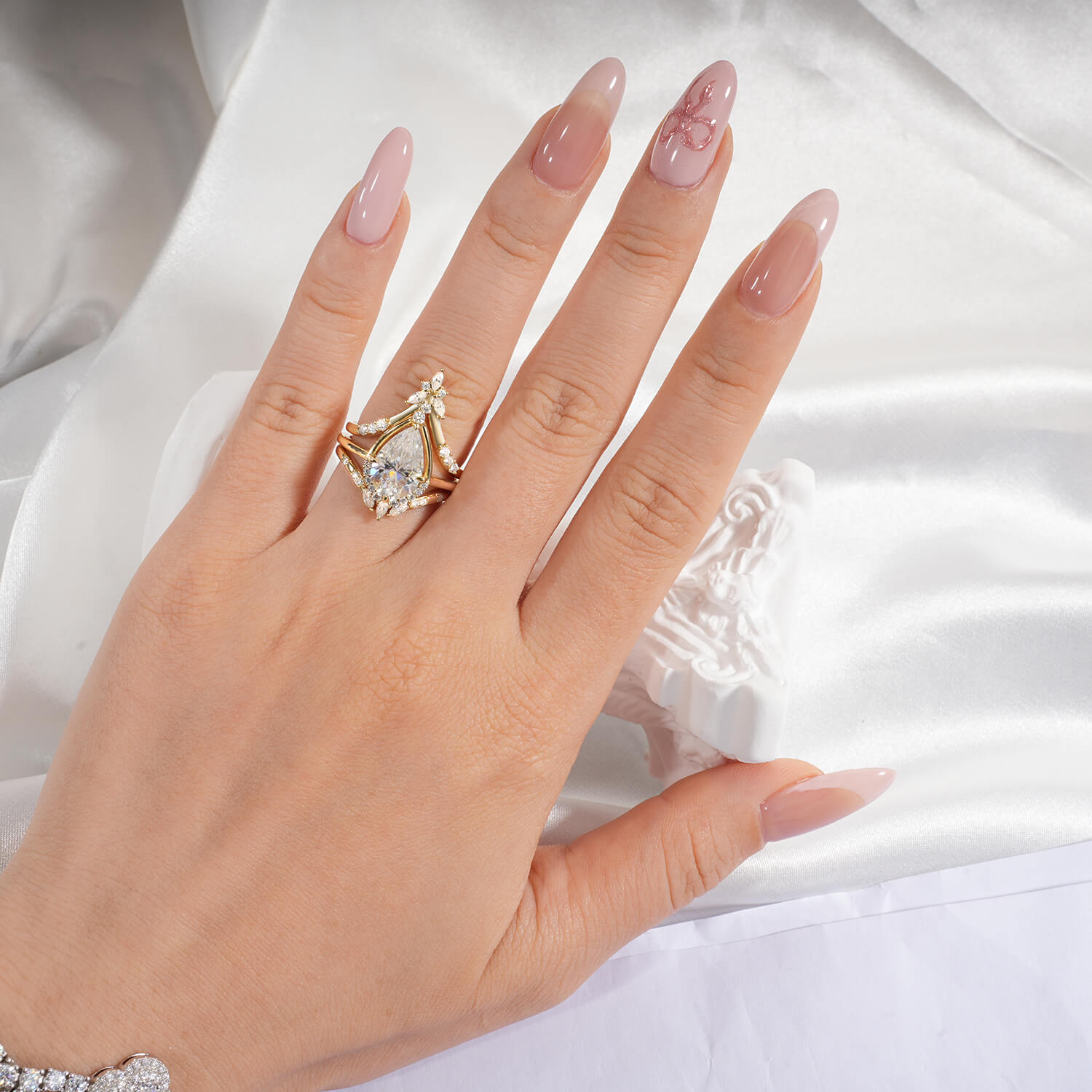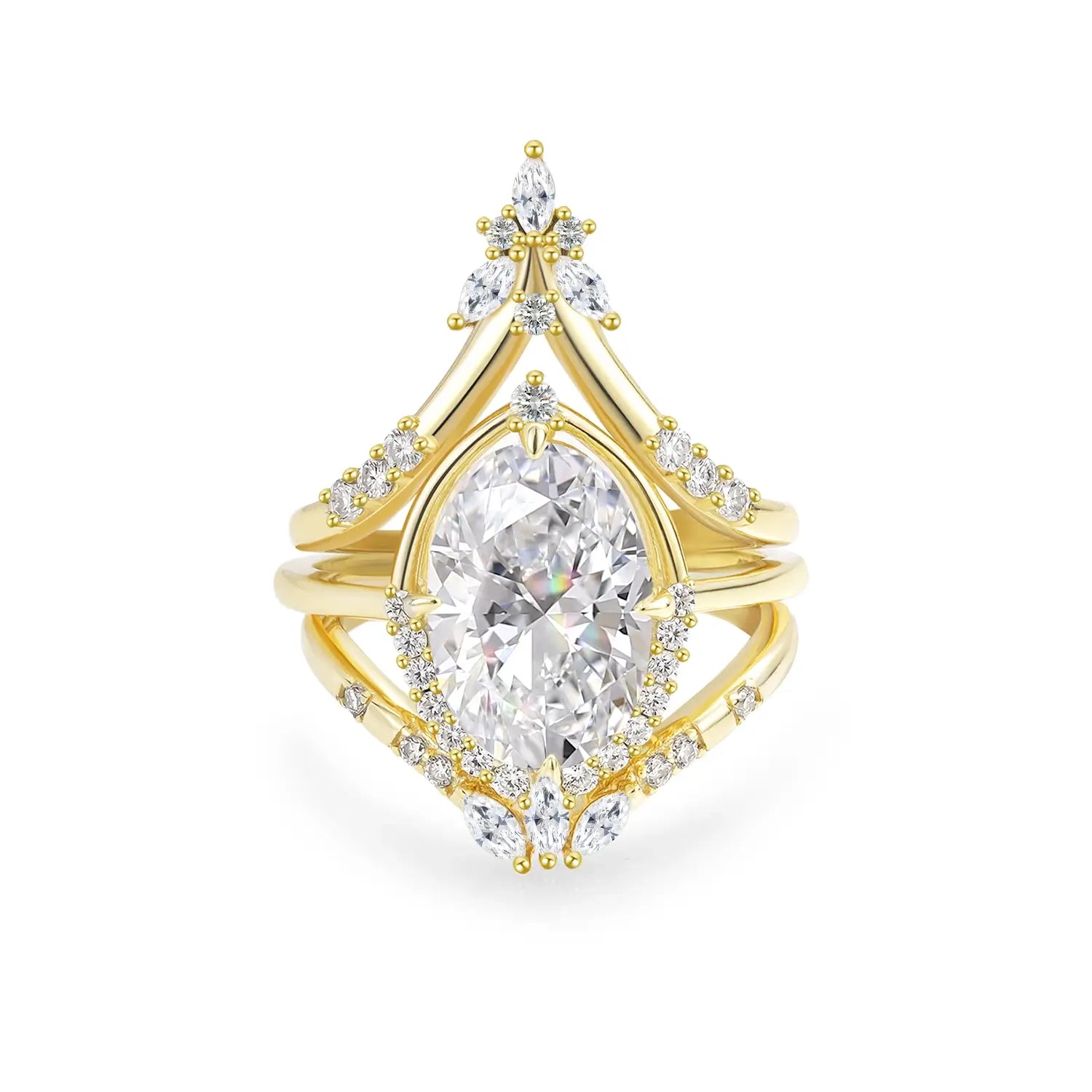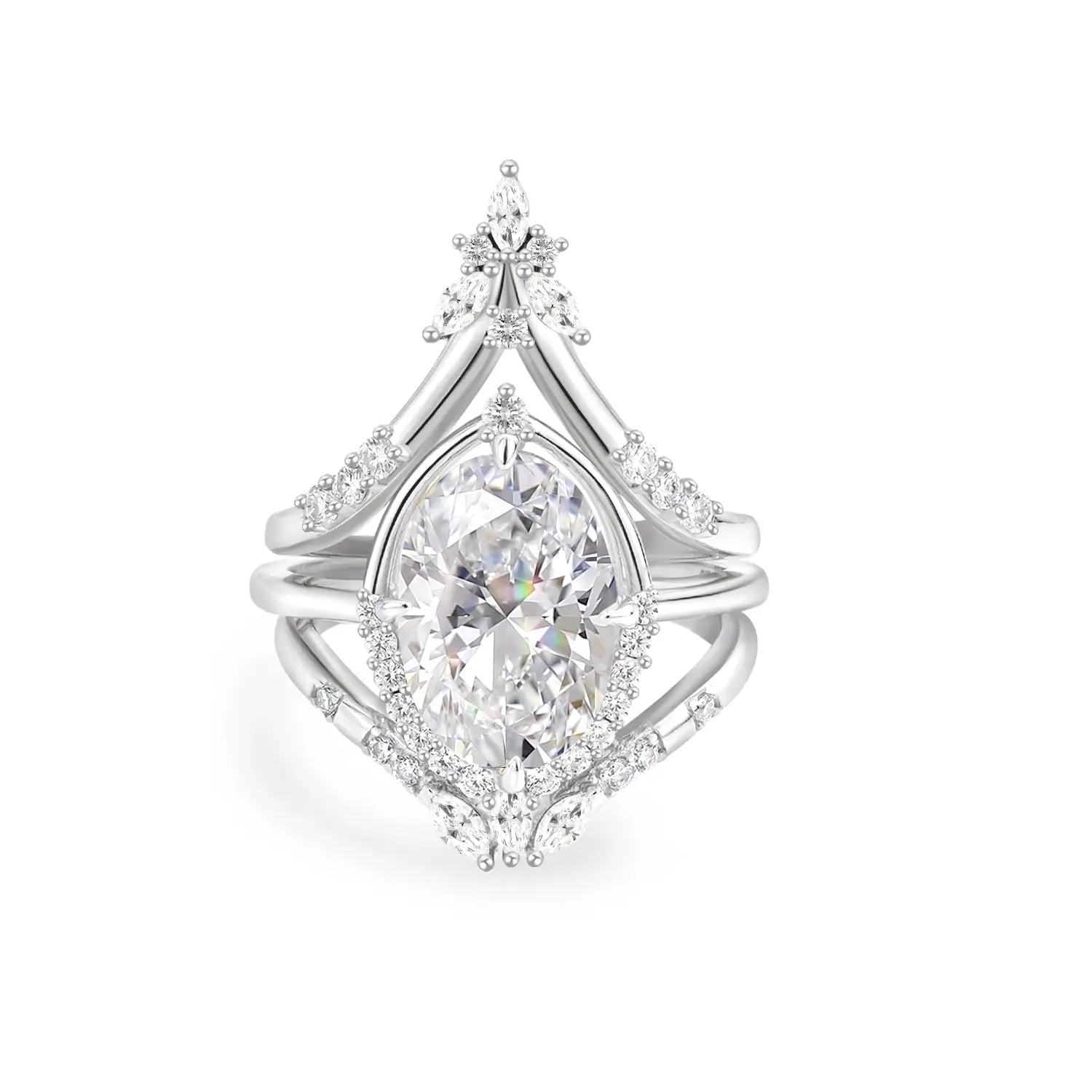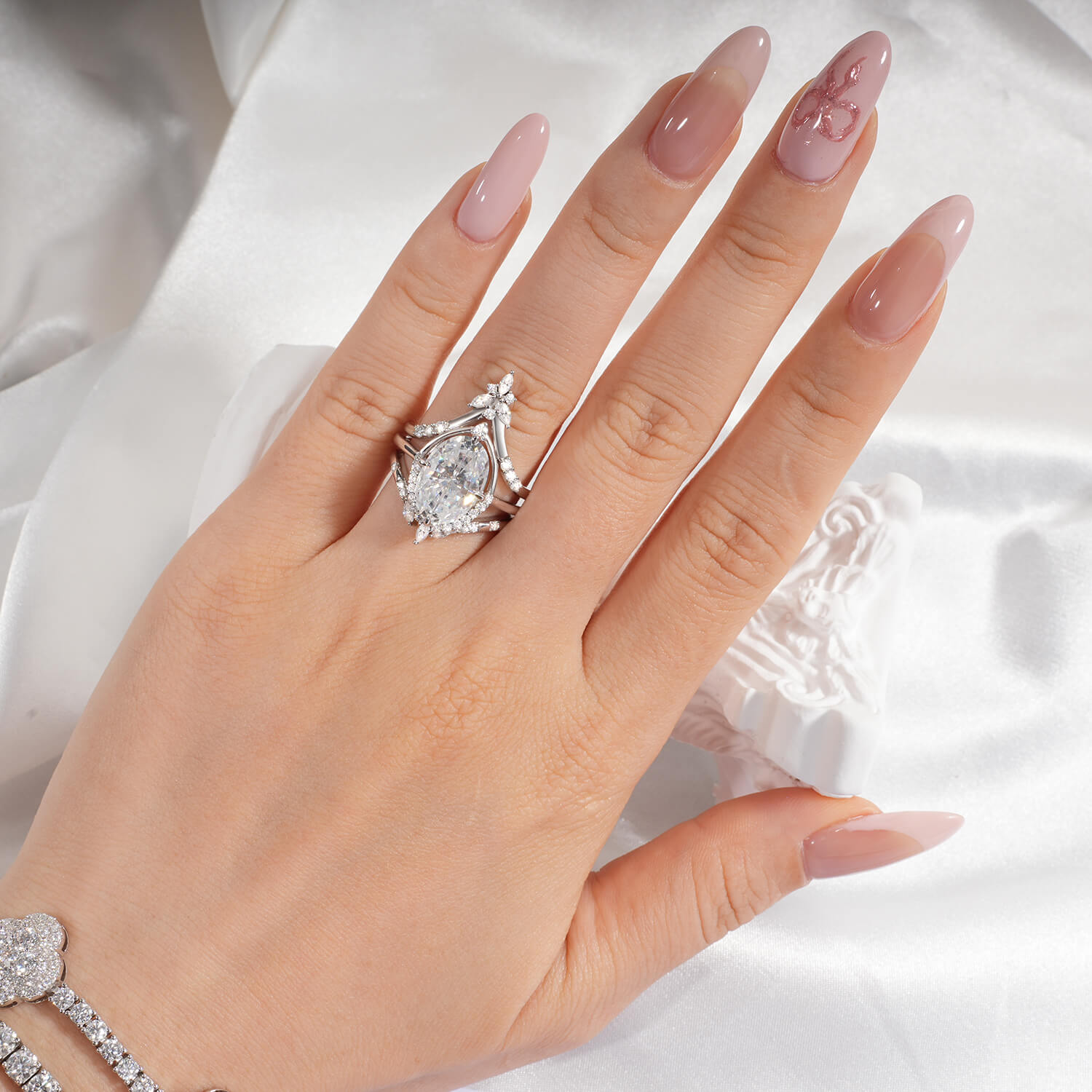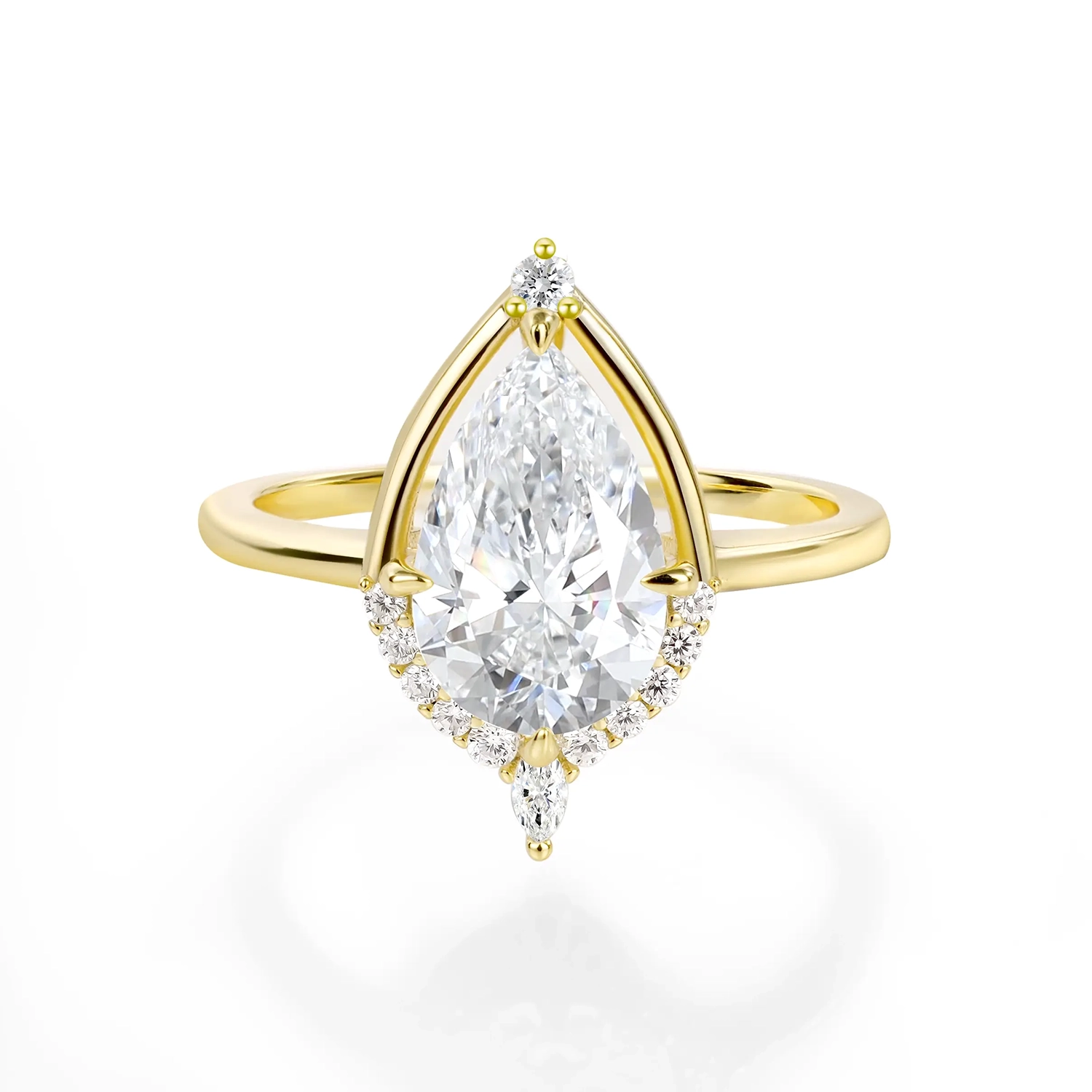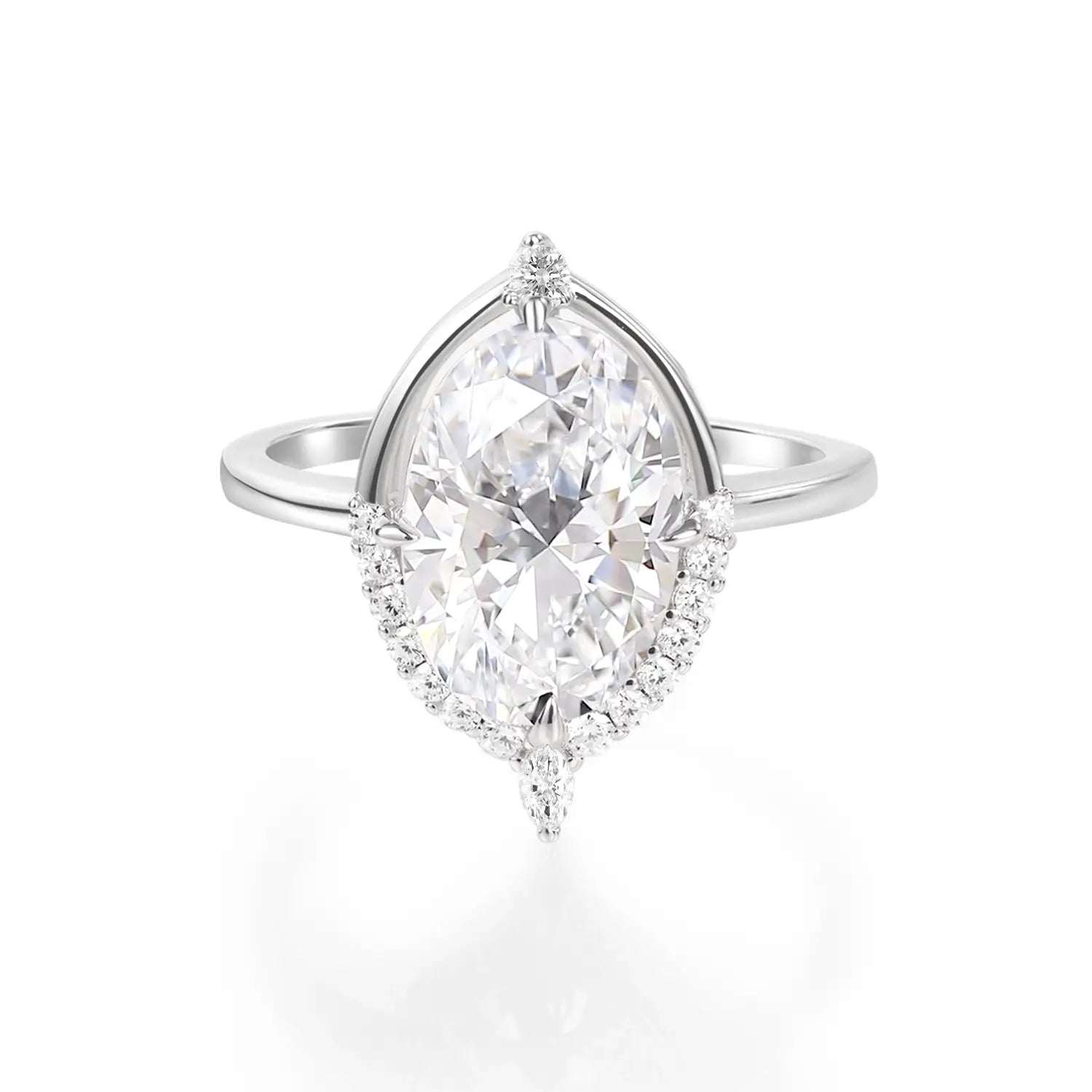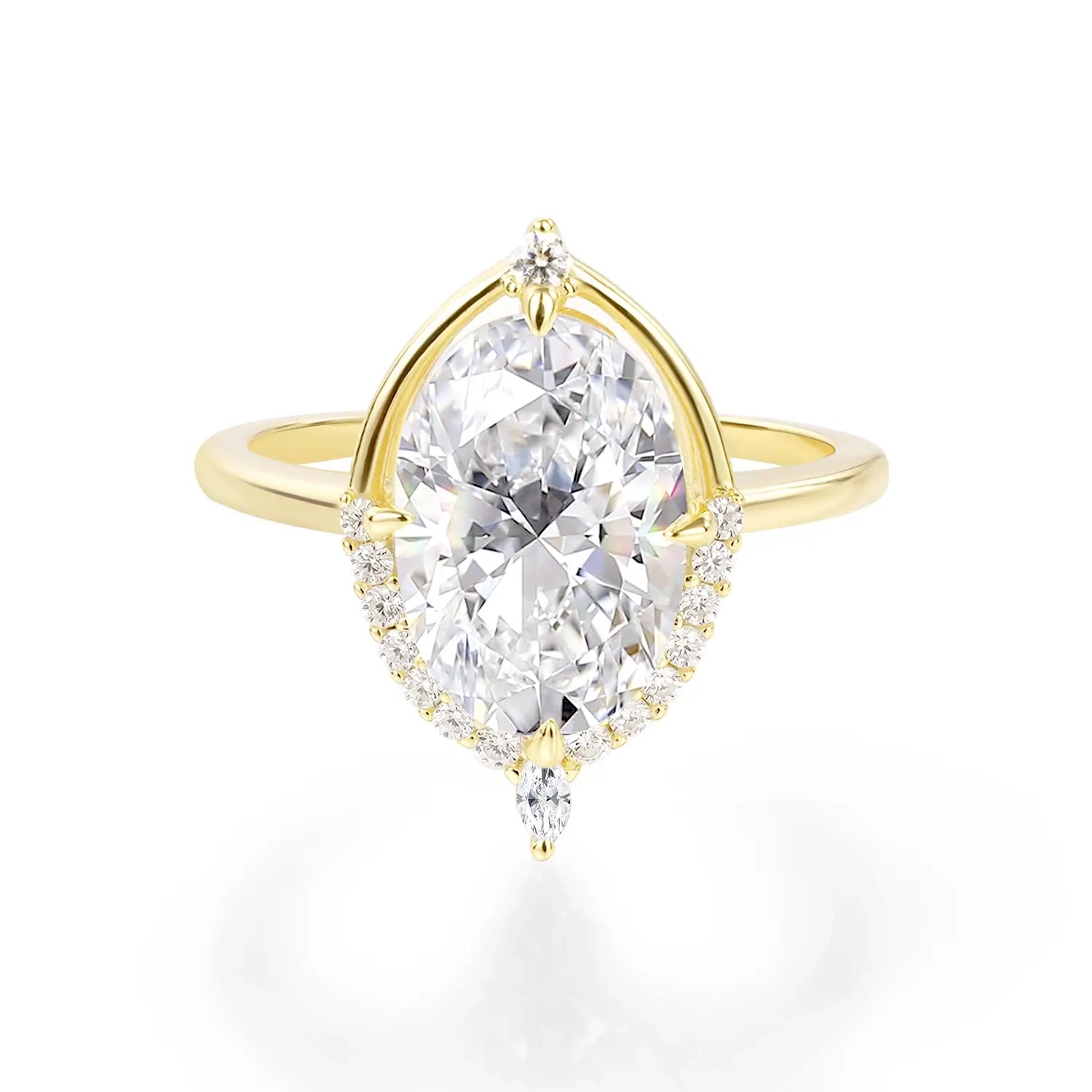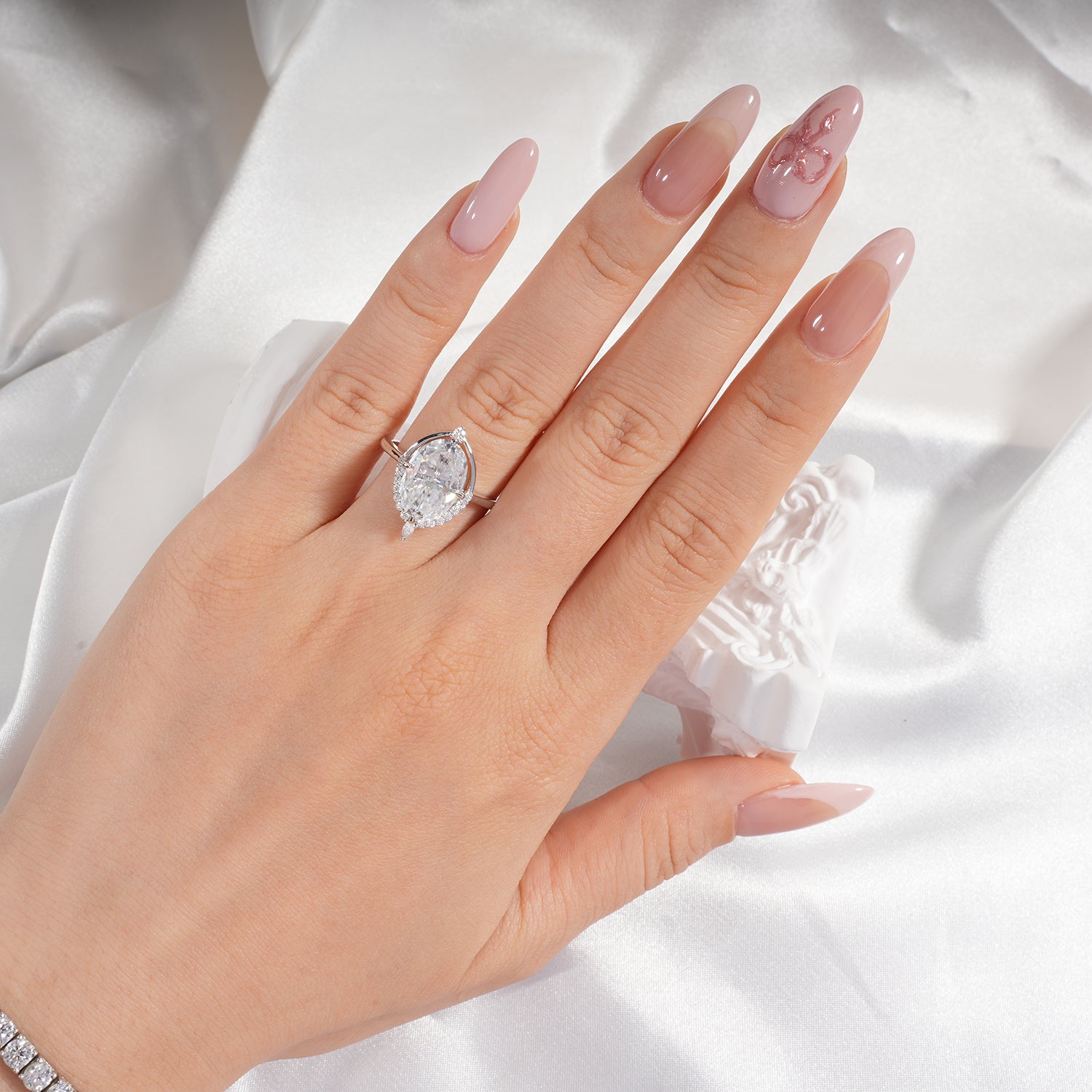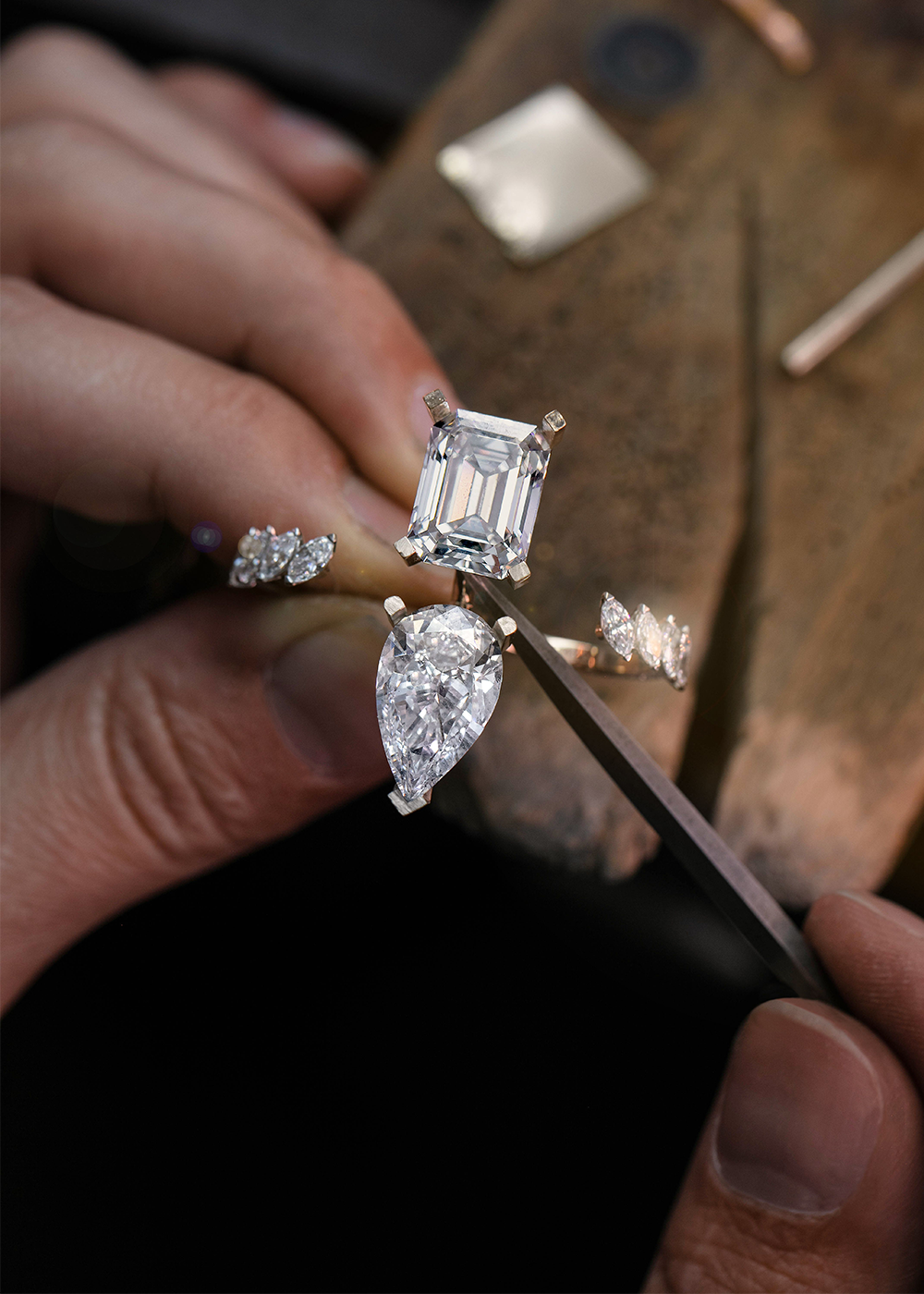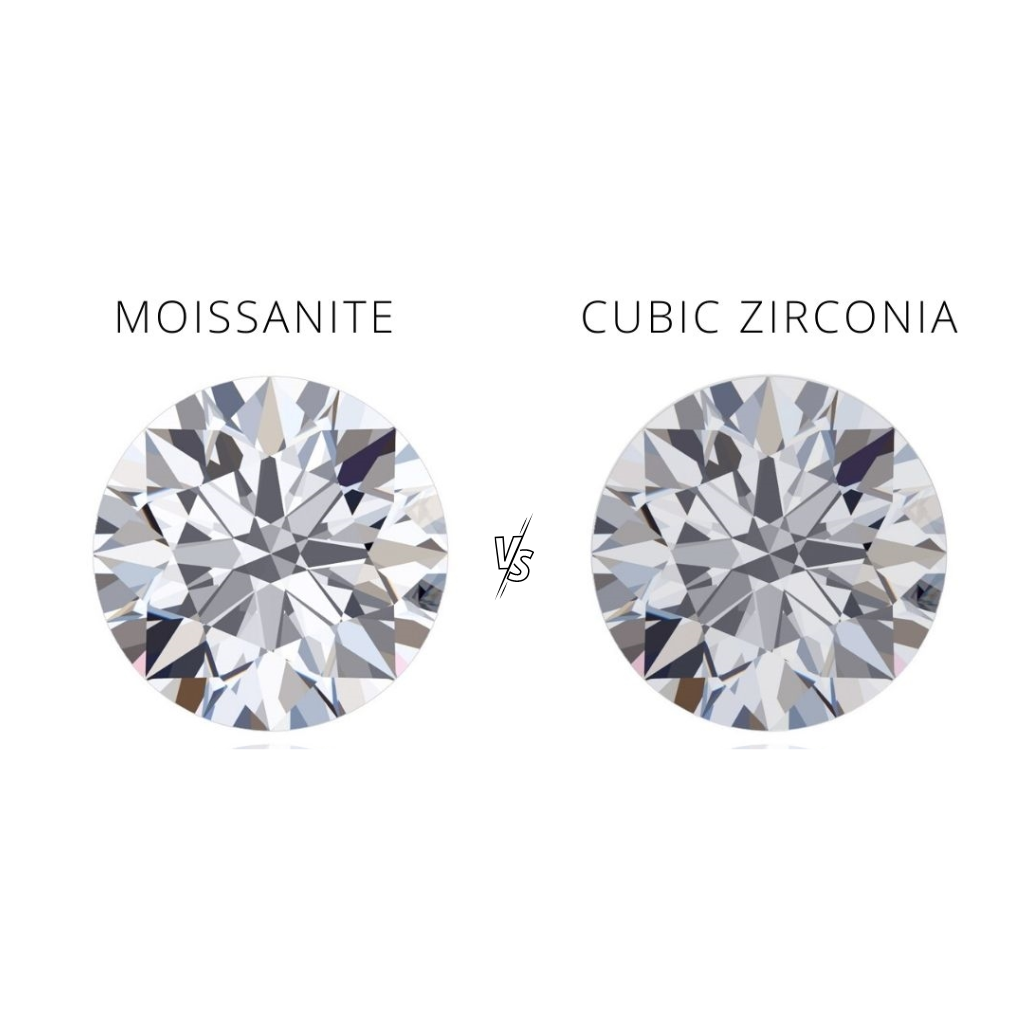Introduction
The rise of lab-created gemstones has transformed the jewelry industry, offering ethical and affordable alternatives to mined diamonds. Two standout options—moissanite and lab-grown diamonds—often spark confusion among shoppers. While both are sustainable, durable, and visually stunning, they cater to different priorities and budgets. In this comprehensive guide, we’ll compare moissanite and lab-grown diamonds across key factors like price, brilliance, certifications, and ethics. Plus, discover why GEMOISS’s moissanite (backed by IGI certification) and lab-grown diamonds (certified by GRA) offer unparalleled transparency and value.
1. What Are Moissanite and Lab-Grown Diamonds?
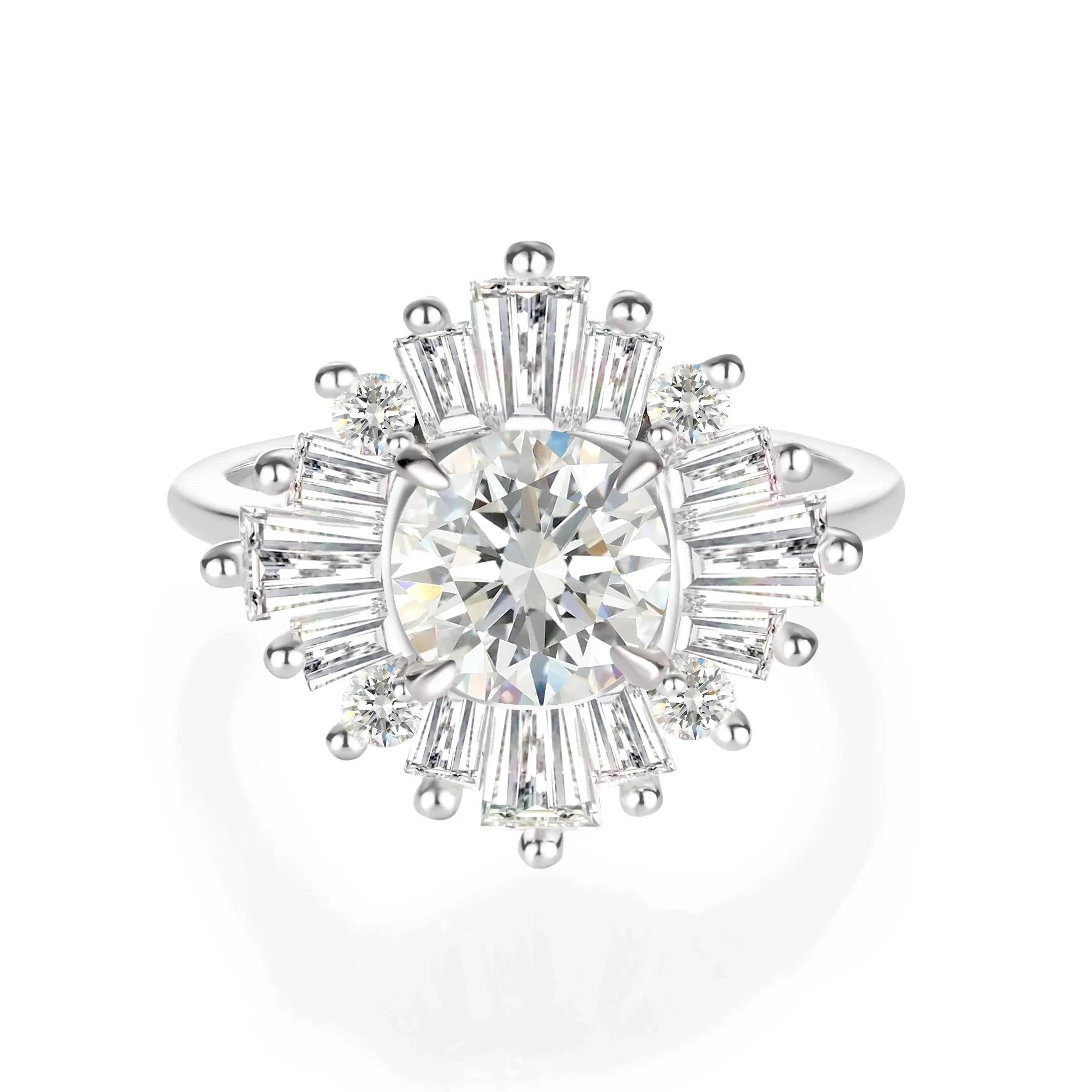
Moissanite
Origin: Originally discovered in meteorites, moissanite is now lab-created from silicon carbide.
Properties: Known for exceptional brilliance (refractive index: 2.65-2.69) and durability (9.25 on the Mohs scale).
GEMOISS Assurance: Every GEMOISS moissanite comes with an GRA (International Gemological Institute) certification, verifying its quality and authenticity.
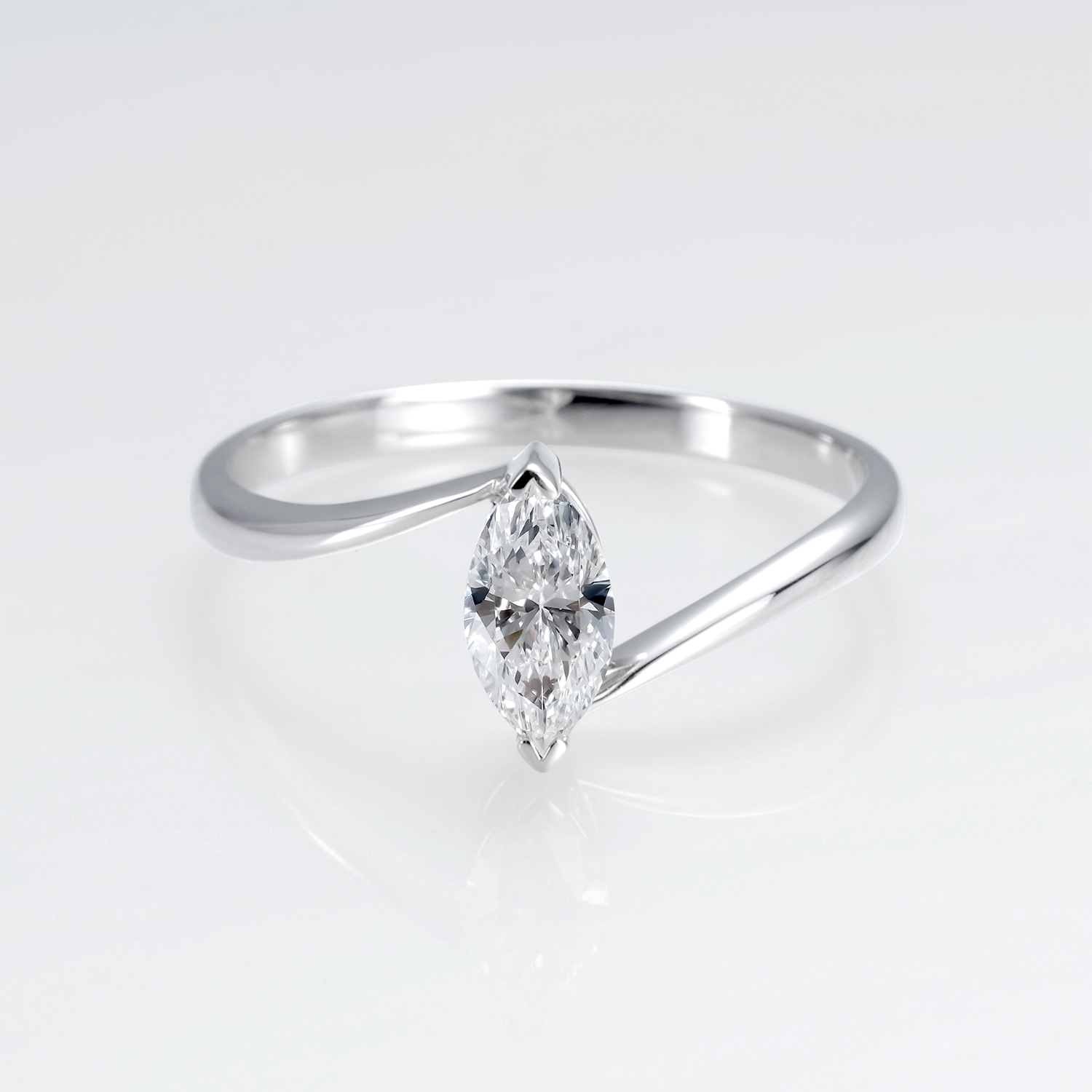
Lab-Grown Diamonds
Origin: Created in labs using high-pressure, high-temperature (HPHT) or chemical vapor deposition (CVD) methods.
Properties: Identical chemical, physical, and optical properties to mined diamonds (Mohs 10 hardness).
GEMOISS Assurance: GEMOISS lab-grown diamonds are certified by IGI (Gemstone Research Association), ensuring they meet strict grading standards.
Price Comparison: Why Lab-Grown Diamonds Cost More Than Moissanite
Moissanite: Starts at 300−600 per carat, making it 90% cheaper than mined diamonds.
Lab-Grown Diamonds: Priced 1,000−3,000 per carat—still 30-50% less than mined diamonds but pricier than moissanite.
Why Certified Lab-Grown Diamonds Cost More:
Certification Fees: Labs like GRA charge for grading (e.g., cut, color, clarity, carat), adding 10-20% to the cost.
Market Trust: Certified stones have verified quality, increasing resale value and buyer confidence.
Uncertified Risks: Non-certified lab-grown diamonds may have undisclosed flaws or treatments, leading to lower prices.
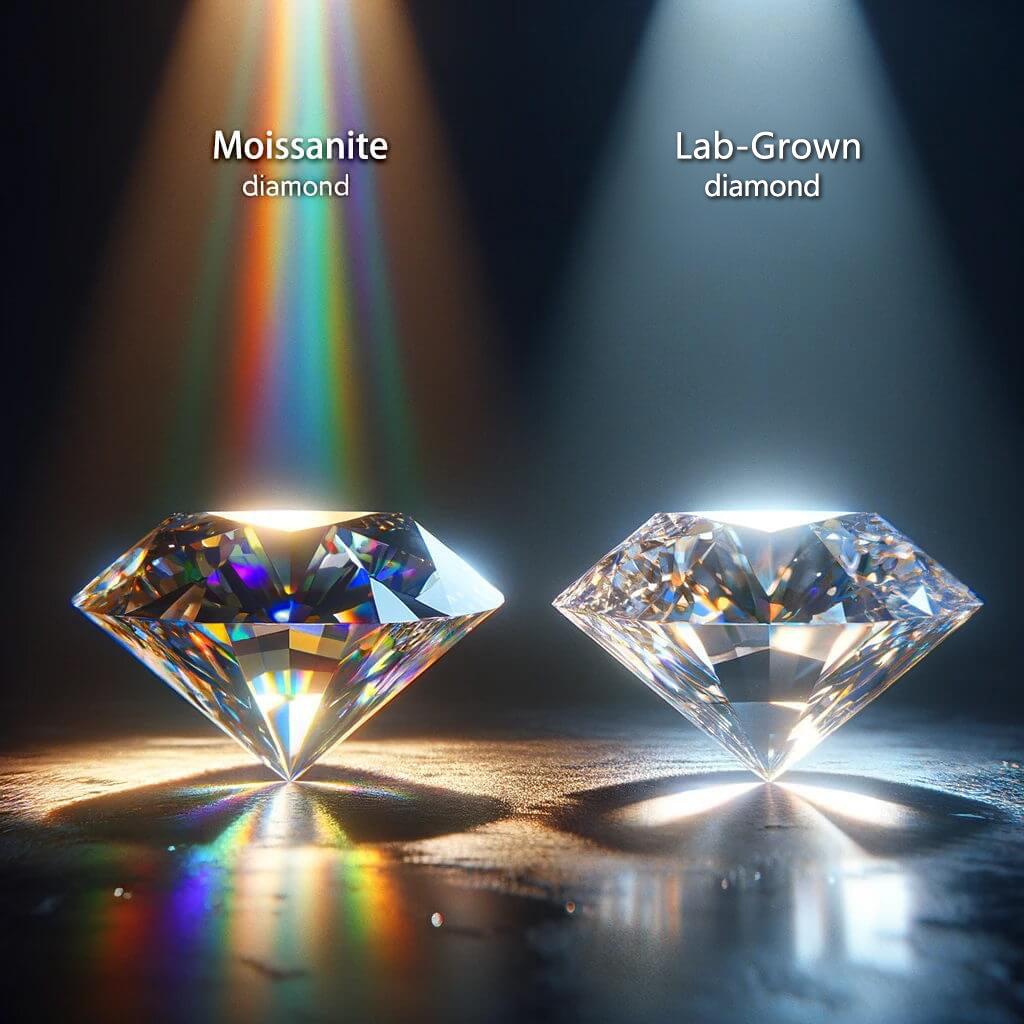
3. Brilliance and Aesthetics: A Side-by-Side Look
a) Fire and Sparkle
- Moissanite: Higher dispersion (0.104 vs. diamond’s 0.044) creates intense rainbow flashes (“fire”), ideal for bold styles.
- Lab-Grown Diamonds: Mimic the classic white sparkle of mined diamonds, appealing to traditionalists.
b) Color and Clarity
- Moissanite: Near-colorless (graded D-F) but may show slight yellow/gray tints in certain lighting.
- Lab-Grown Diamonds: Offer D-J color grades and flawless clarity, matching mined diamonds.
c) Cut and Shape Availability
Both gems come in all popular cuts (round, oval, emerald), but moissanite is more versatile for custom shapes like hexagons.
4. Durability and Longevity
- Lab-Grown Diamonds (Mohs 10): The hardest gemstone, scratch-resistant for lifelong wear.
- Moissanite (Mohs 9.25): Nearly as durable, suitable for daily use but slightly more prone to surface scratches over decades.
5. Ethical and Environmental Impact
Shared Advantages:
- Zero mining-related environmental damage.
- Conflict-free sourcing.
- Carbon Footprint: Lab-grown diamonds require more energy to produce than moissanite, but both are greener than mining.
6. Certifications: Why They Matter
a) IGI Certification for Moissanite
- GEMOISS’s IGI Reports: Validate the stone’s cut, clarity, and dimensions.
- Consumer Benefit: Ensures you’re paying for quality, not marketing hype.
b) GRA Certification for Lab-Grown Diamonds
- GEMOISS’s GRA Reports: Detail the 4Cs (cut, color, clarity, carat) and confirm lab-grown origin.
- Why Pay More for Certified Stones?
- Quality Guarantee: Avoids misgraded or treated stones.
- Resale Value: Certification boosts buyer trust if you ever sell or upgrade.
- Insurance Requirements: Insurers often require certifications for coverage.
7. Who Should Choose Moissanite?
- Budget-Conscious Buyers: Maximize size and sparkle without overspending.
- Non-Traditionalists: Love rainbow fire and unique designs.
Example: GEMOISS’s Pear Cut Moissanite Engagement Ring Antique Distance Wedding Band (GRA-certified) offers a 5ct look for under $200.
8. Who Should Choose Lab-Grown Diamonds?
- Classic Style Lovers: Want the mined diamond look at a fraction of the cost.
- Engagement Ring Shoppers: Prioritize tradition and longevity.
Example: GEMOISS’s Oval Cut Lab-Grown Diamond Twists Accent Engagement Ring (IGI-certified) delivers a 2ct D-color diamond for $2,499.
9. Common Myths Debunked
- “Moissanite Looks Fake”: Advances in cutting techniques make it hard to distinguish from diamonds.
- “Lab-Grown Diamonds Are Overpriced”: Certification and production costs justify their premium over moissanite.
- “Uncertified Gems Are a Steal”: Risk of poor quality or undisclosed treatments outweighs savings.
10. How to Buy Smart: GEMOISS’s Tips
- Prioritize Certification: Always request IGI (moissanite) or GRA (lab-grown diamond) reports.
- Compare Lighting: View stones in natural and artificial light to assess brilliance.
- Check Return Policies: Reputable brands like GEMOISS offer 30-day returns and lifetime warranties.
Conclusion
Choosing between moissanite and lab-grown diamonds depends on your budget, style, and values. Moissanite dazzles with fiery brilliance and affordability, while lab-grown diamonds deliver timeless elegance with eco-conscious appeal. With GEMOISS’s certified collections, you can invest confidently in a gemstone that aligns with your priorities.
Explore GEMOISS’s curated selection of IGI-certified moissanite and GRA-certified lab-grown diamonds to find your perfect match.

